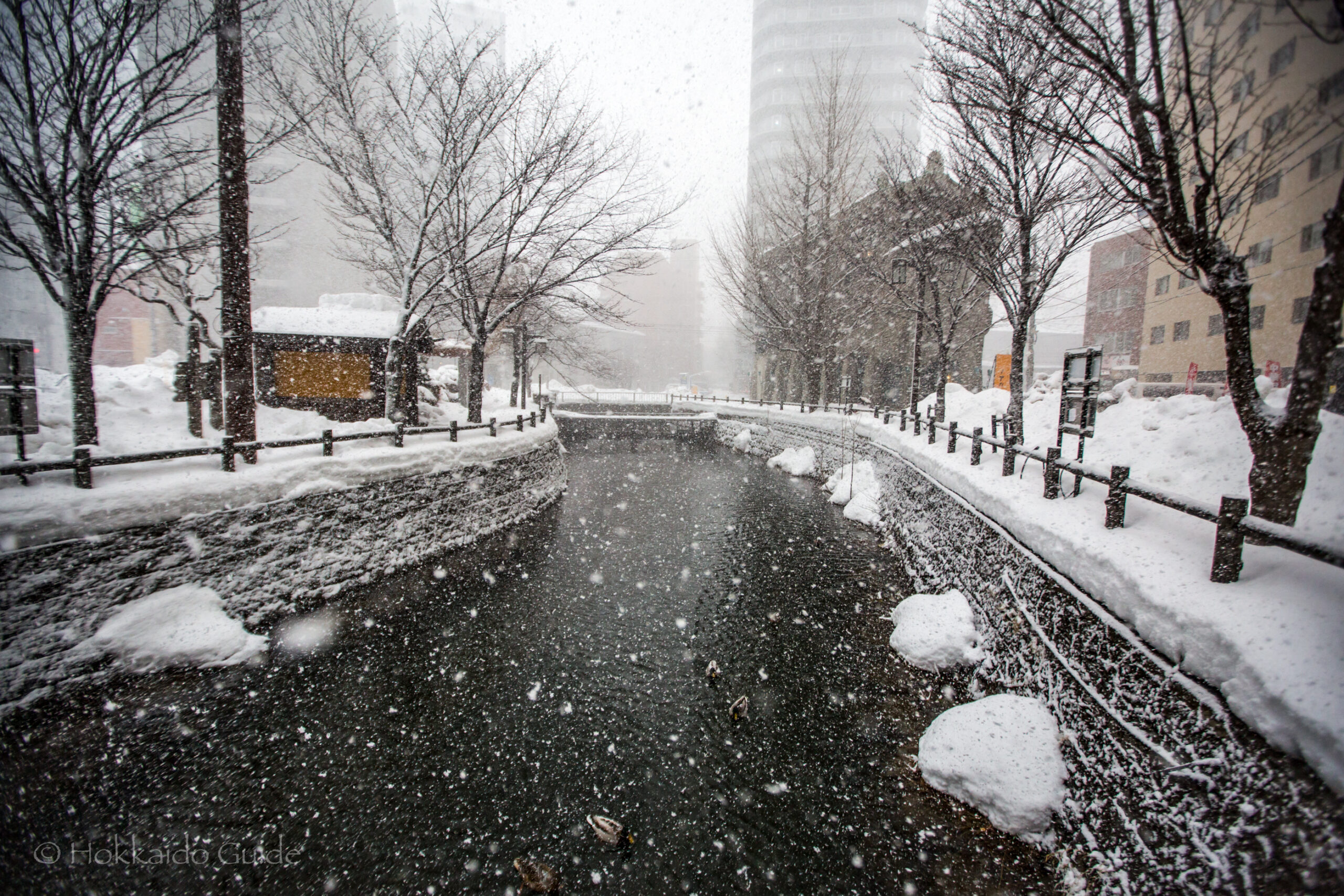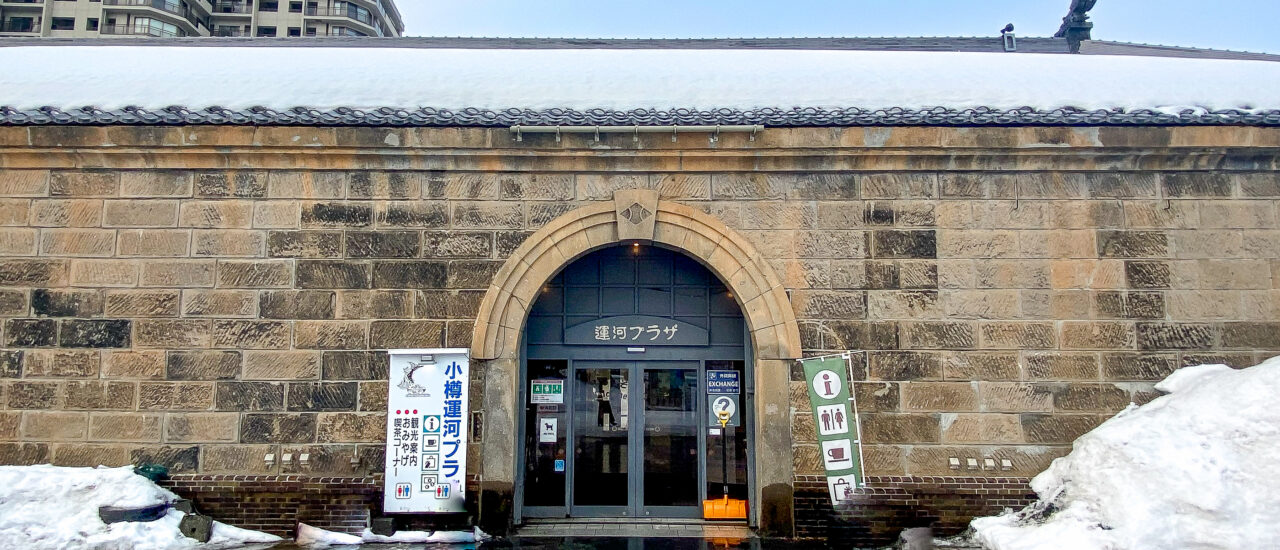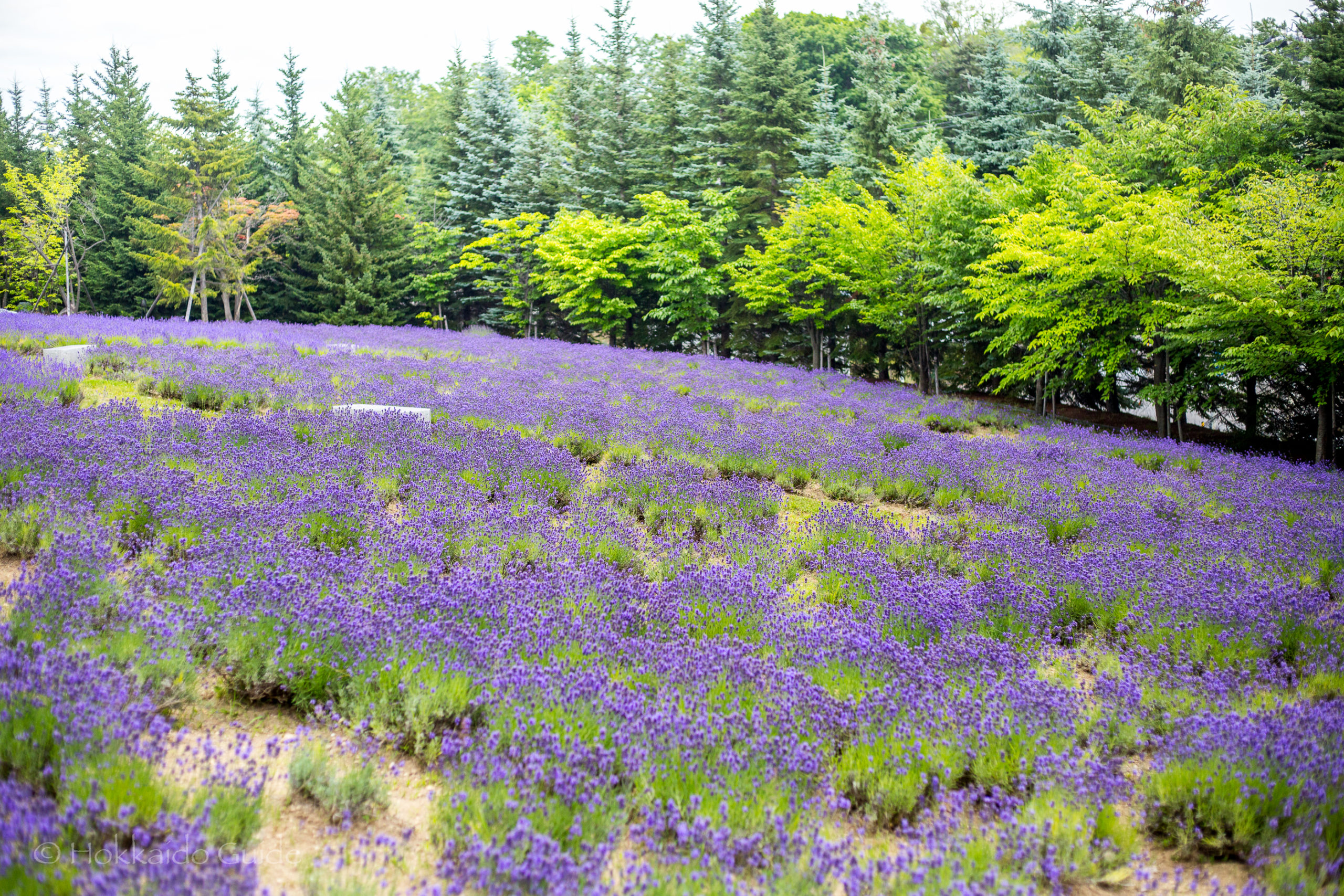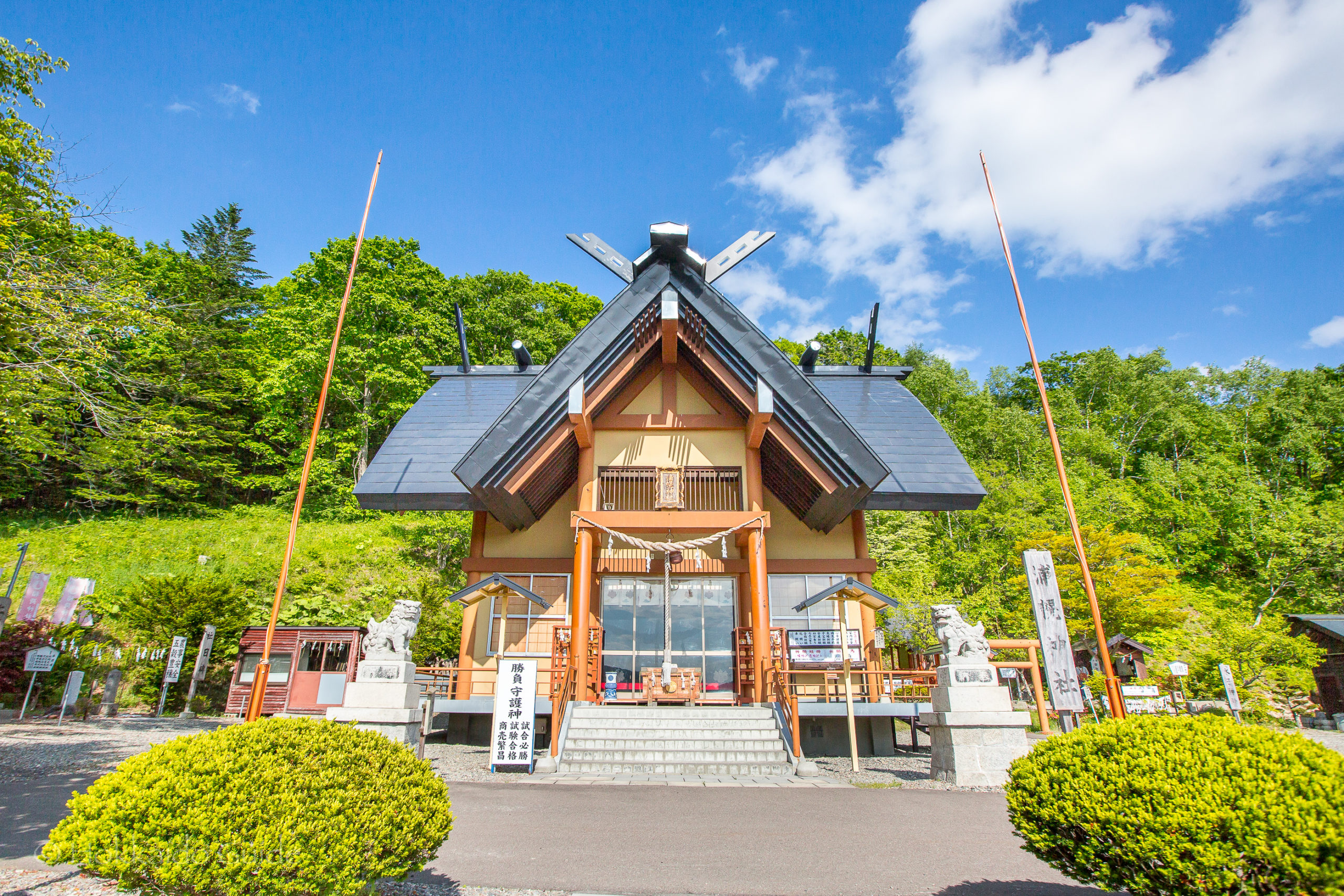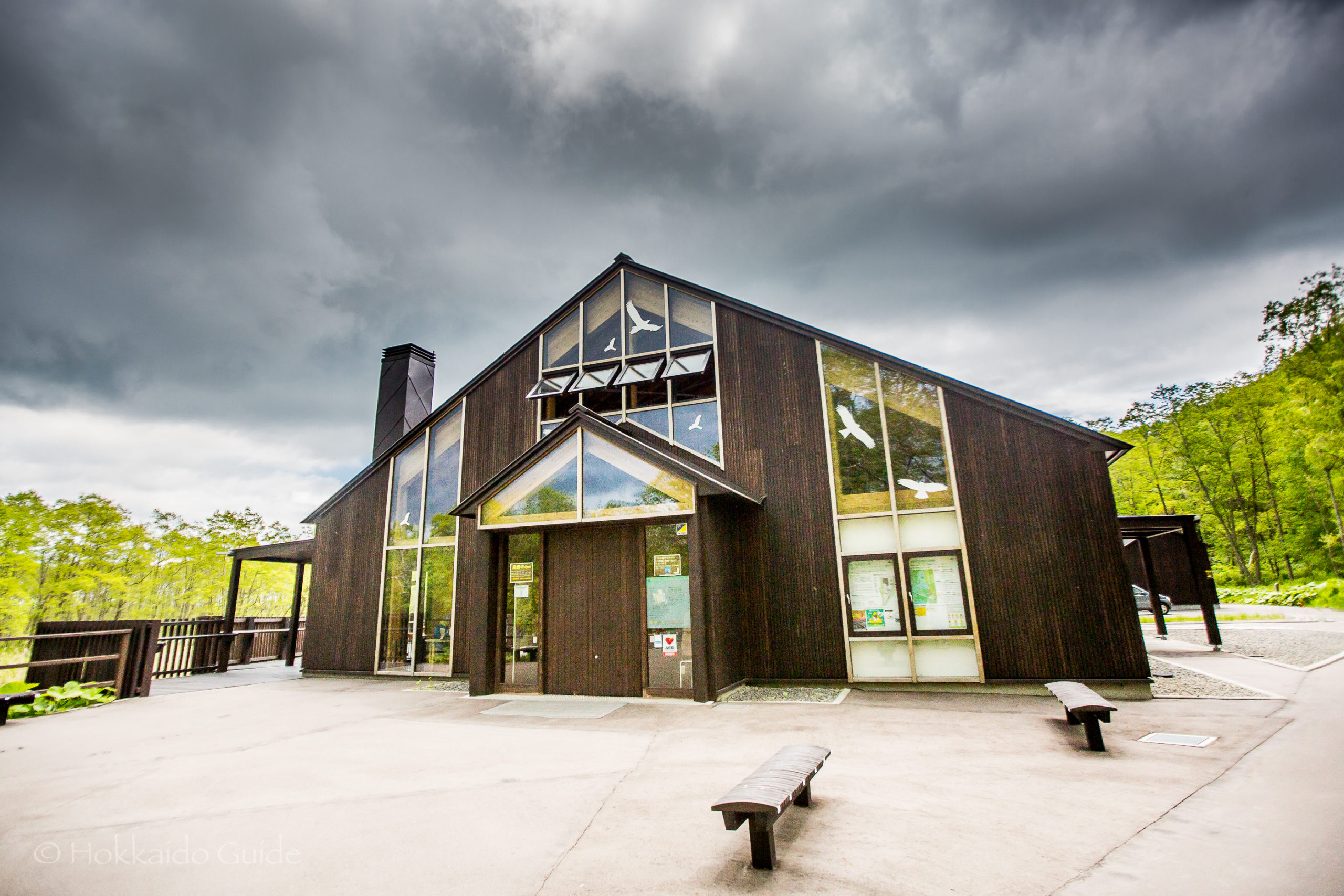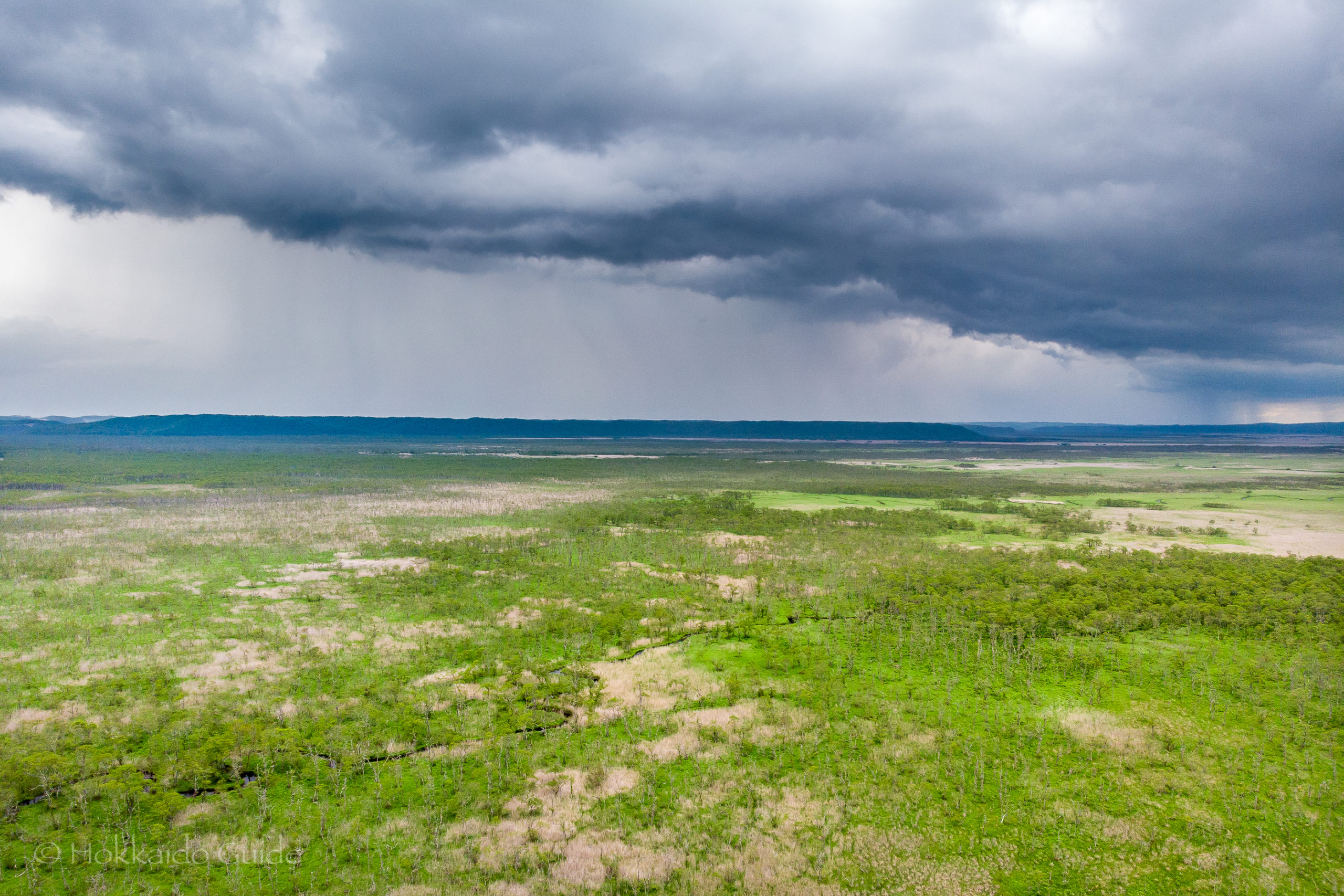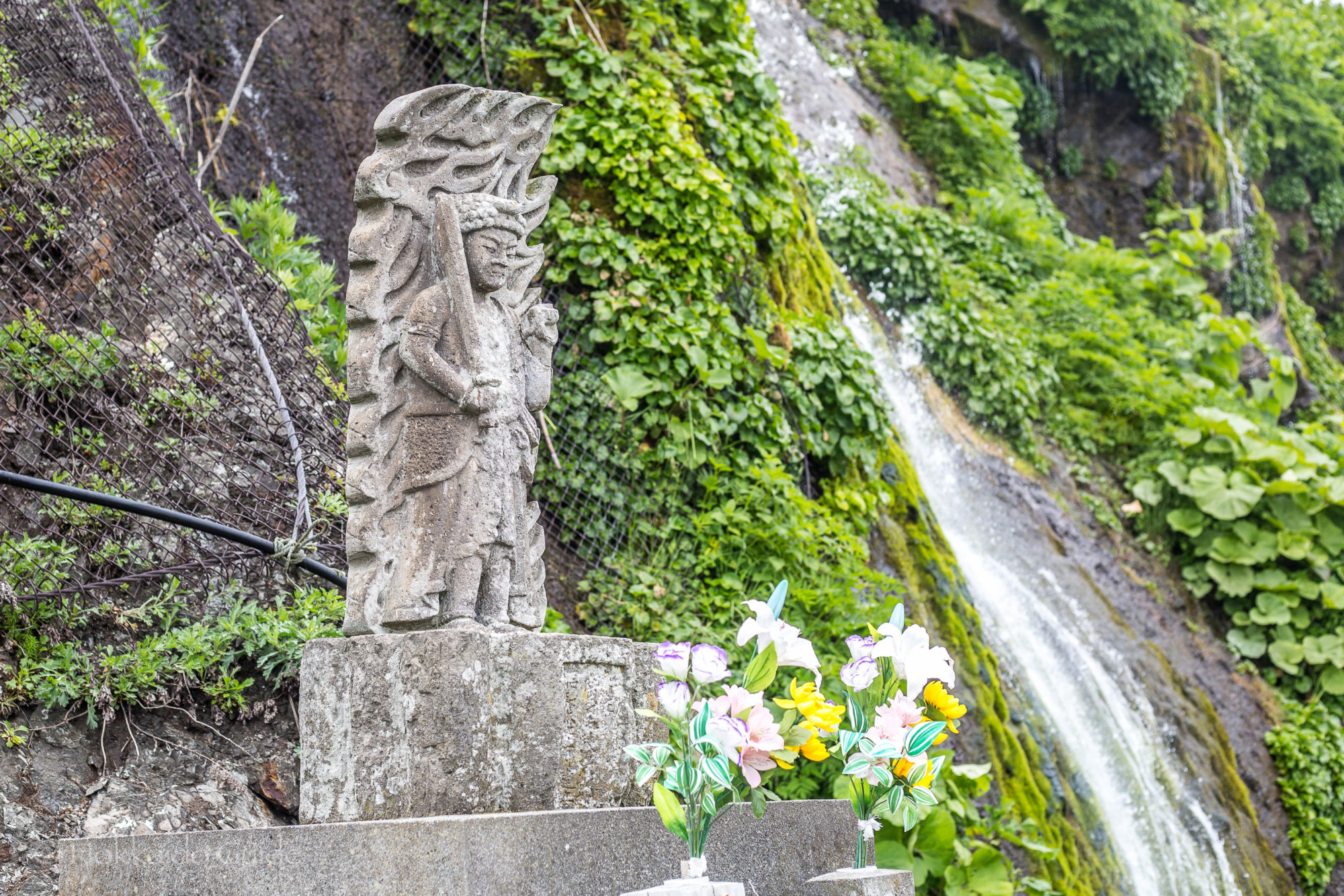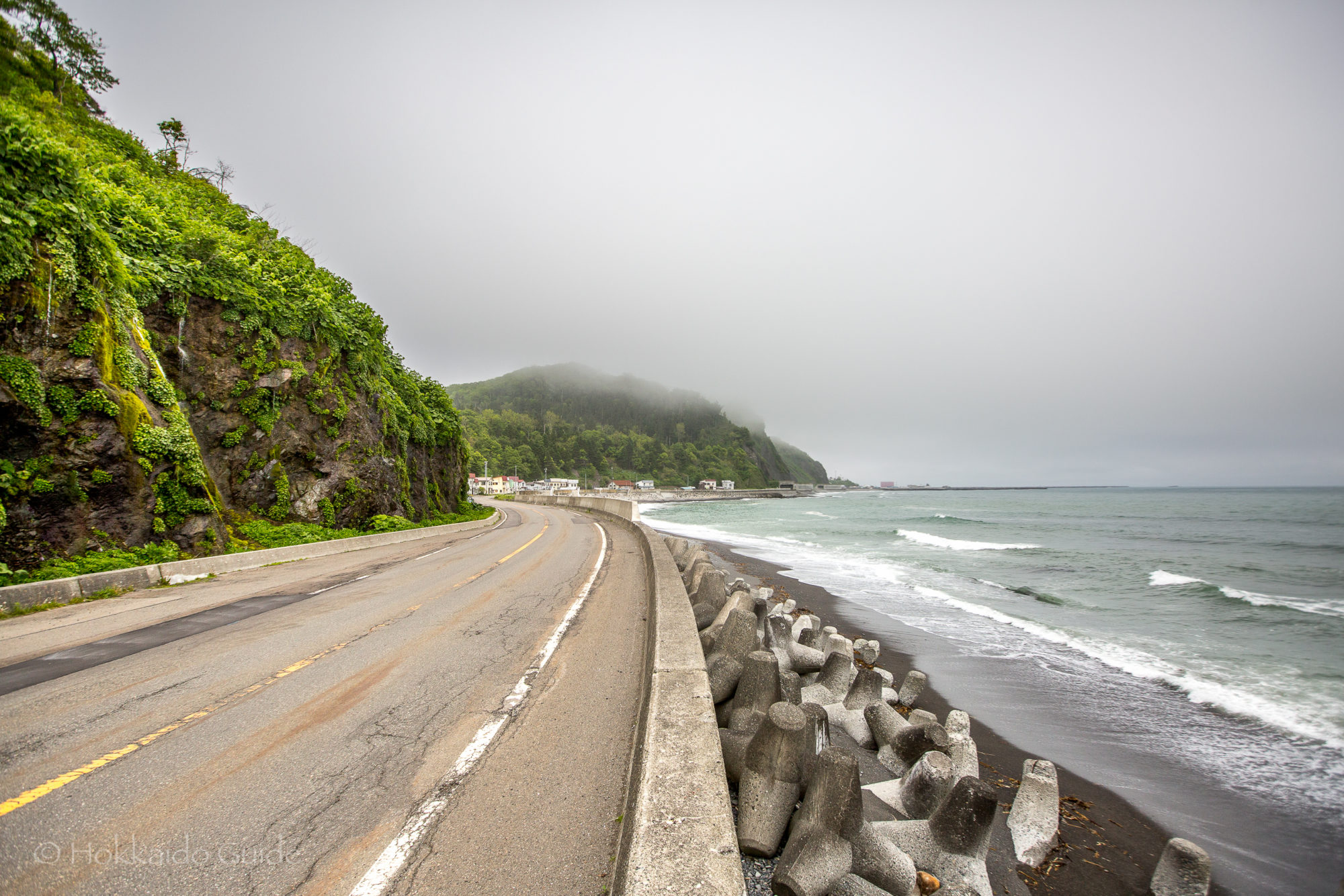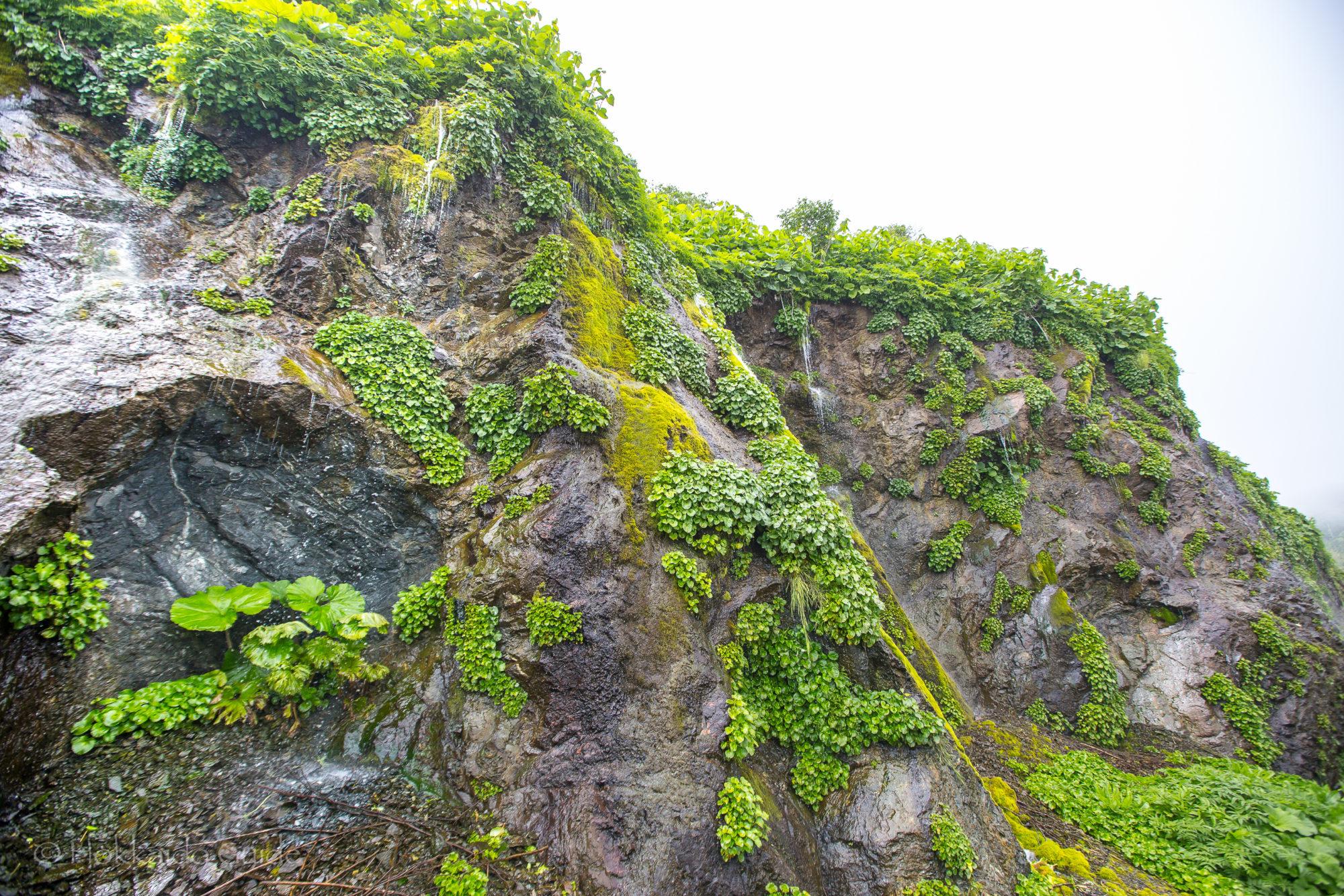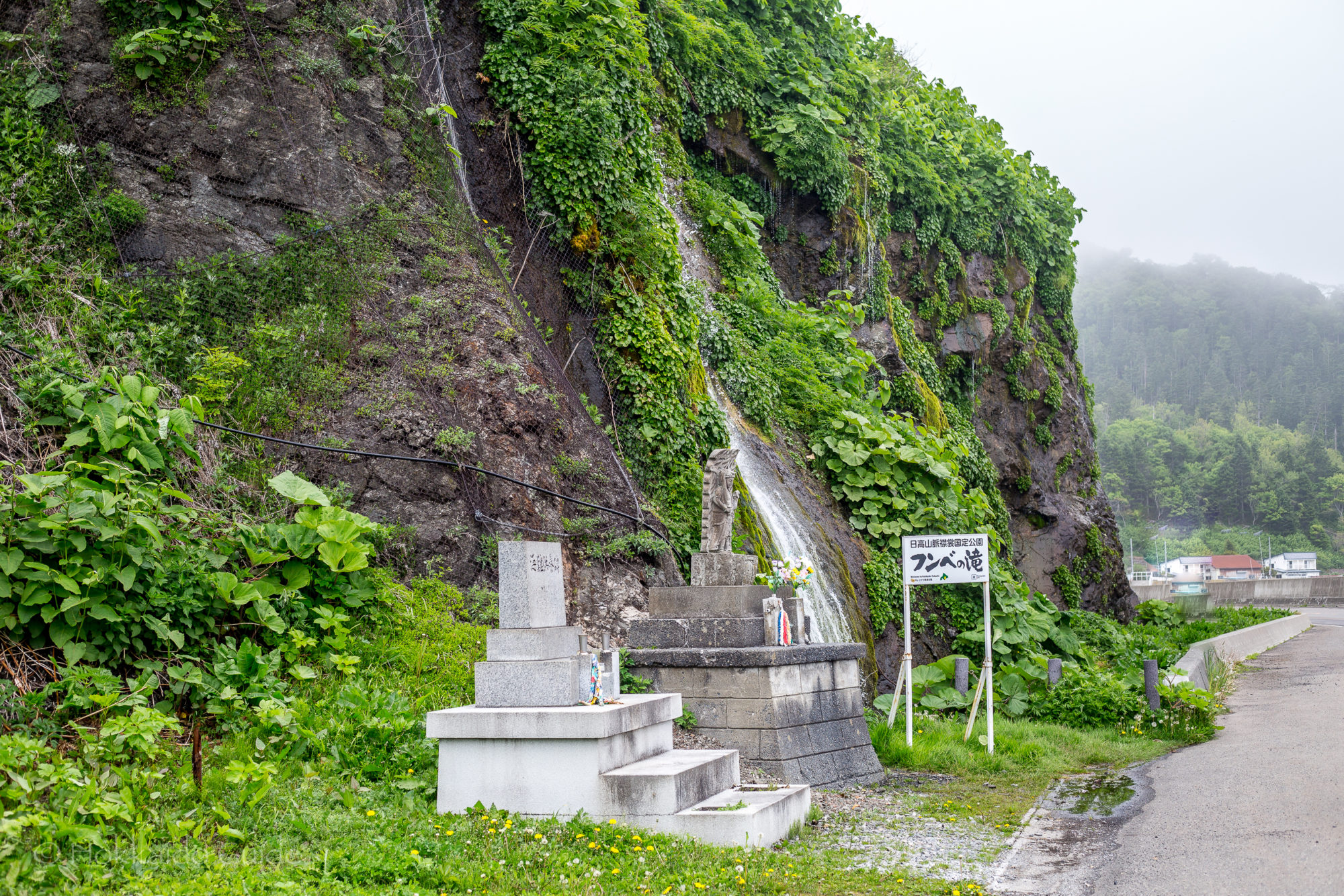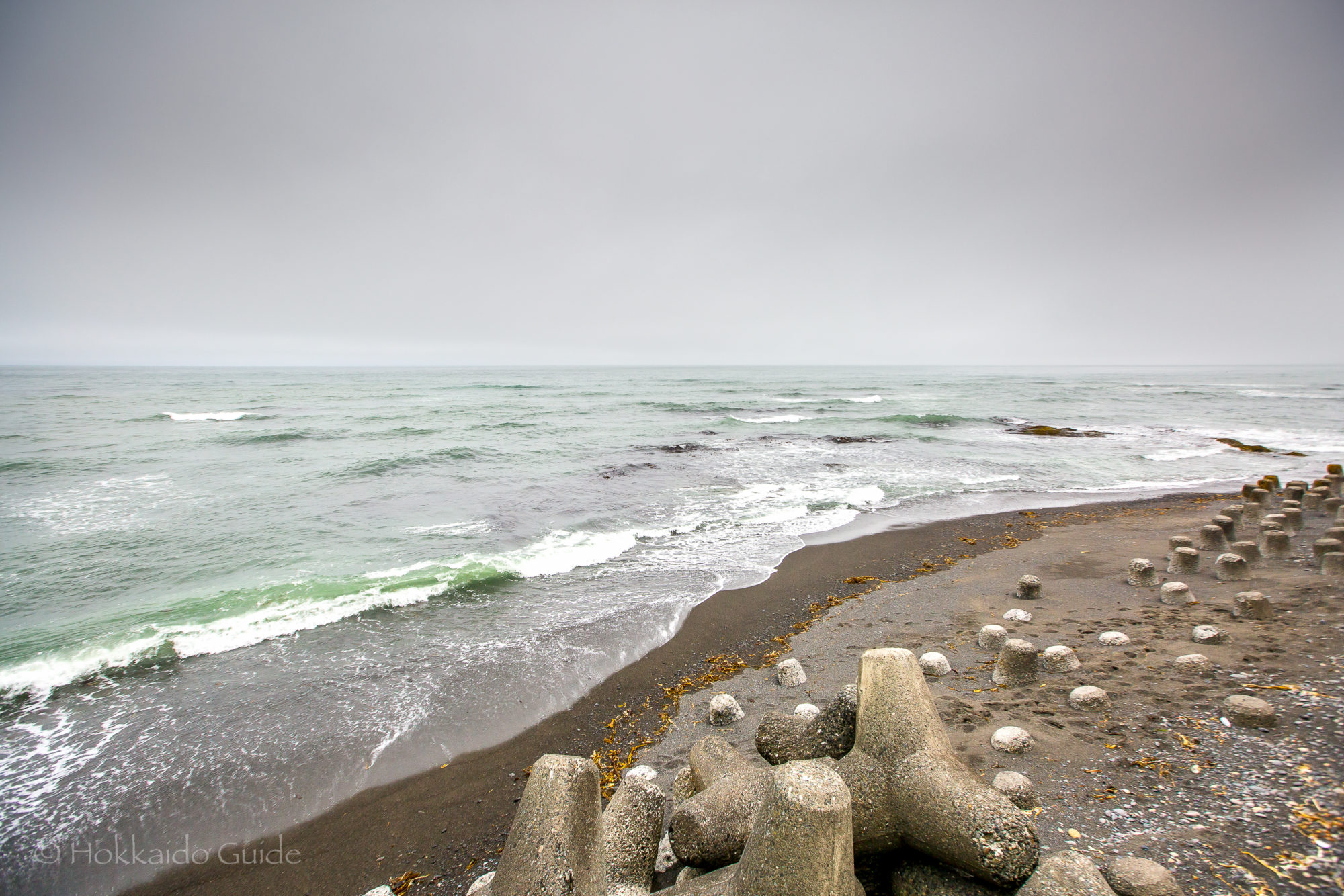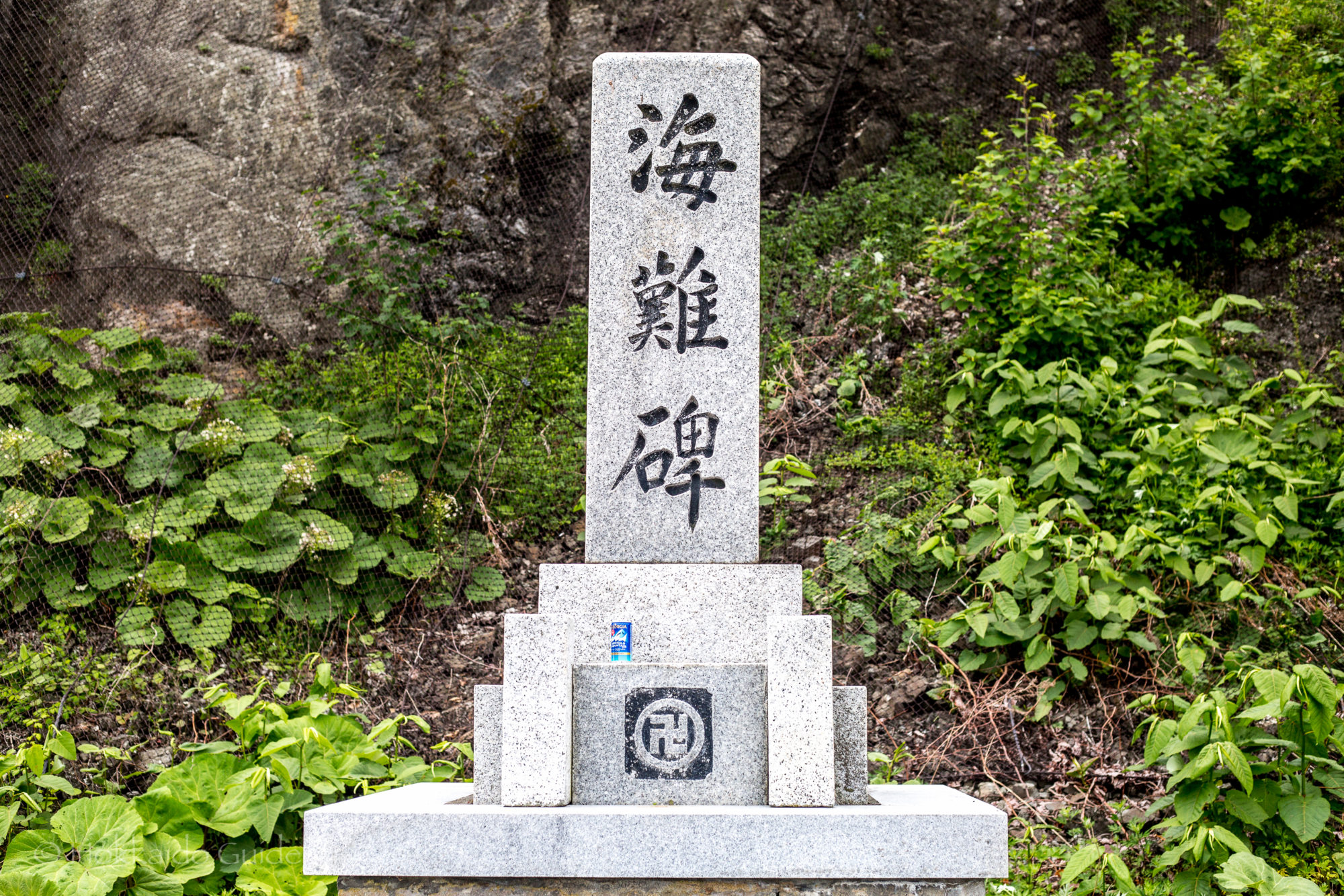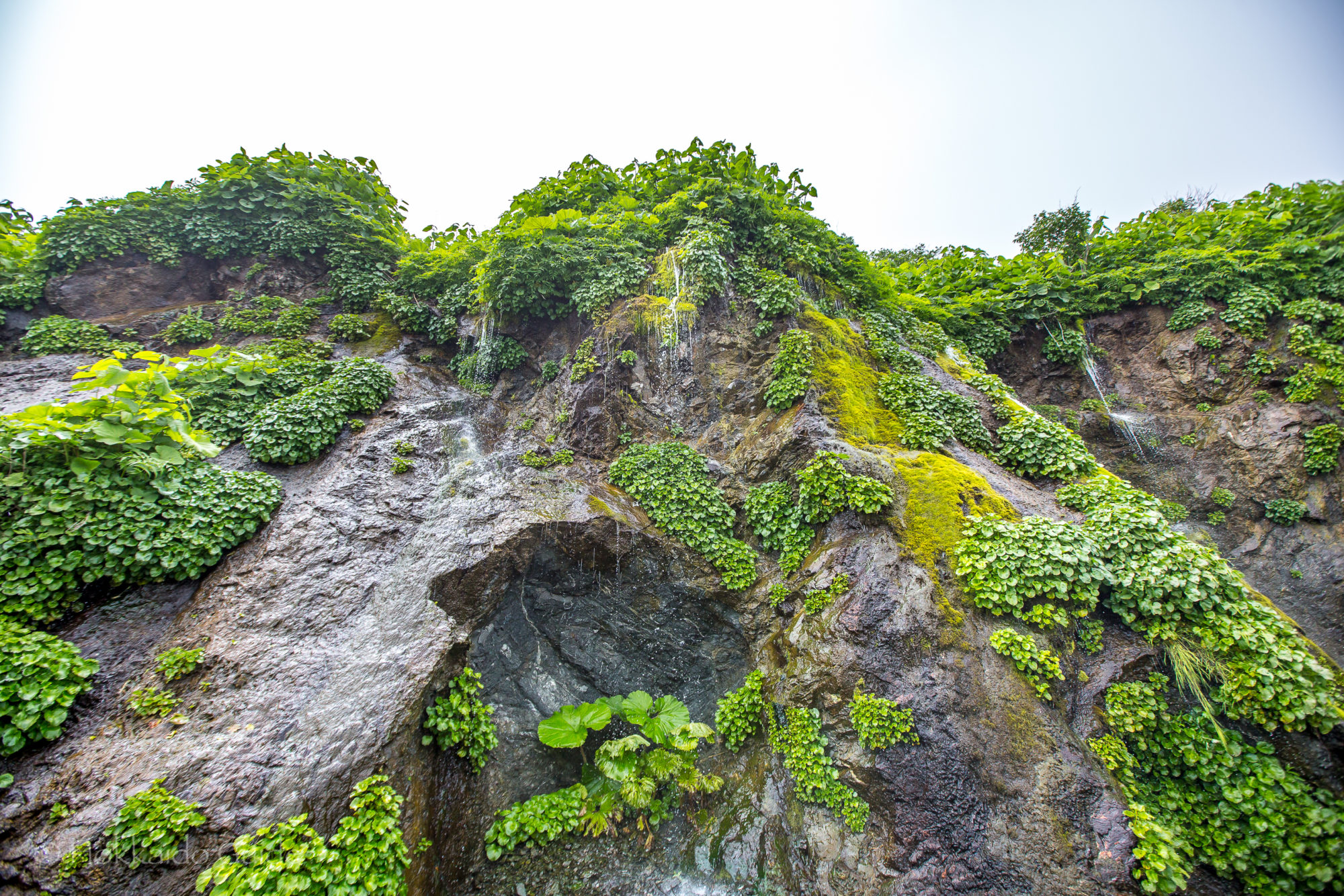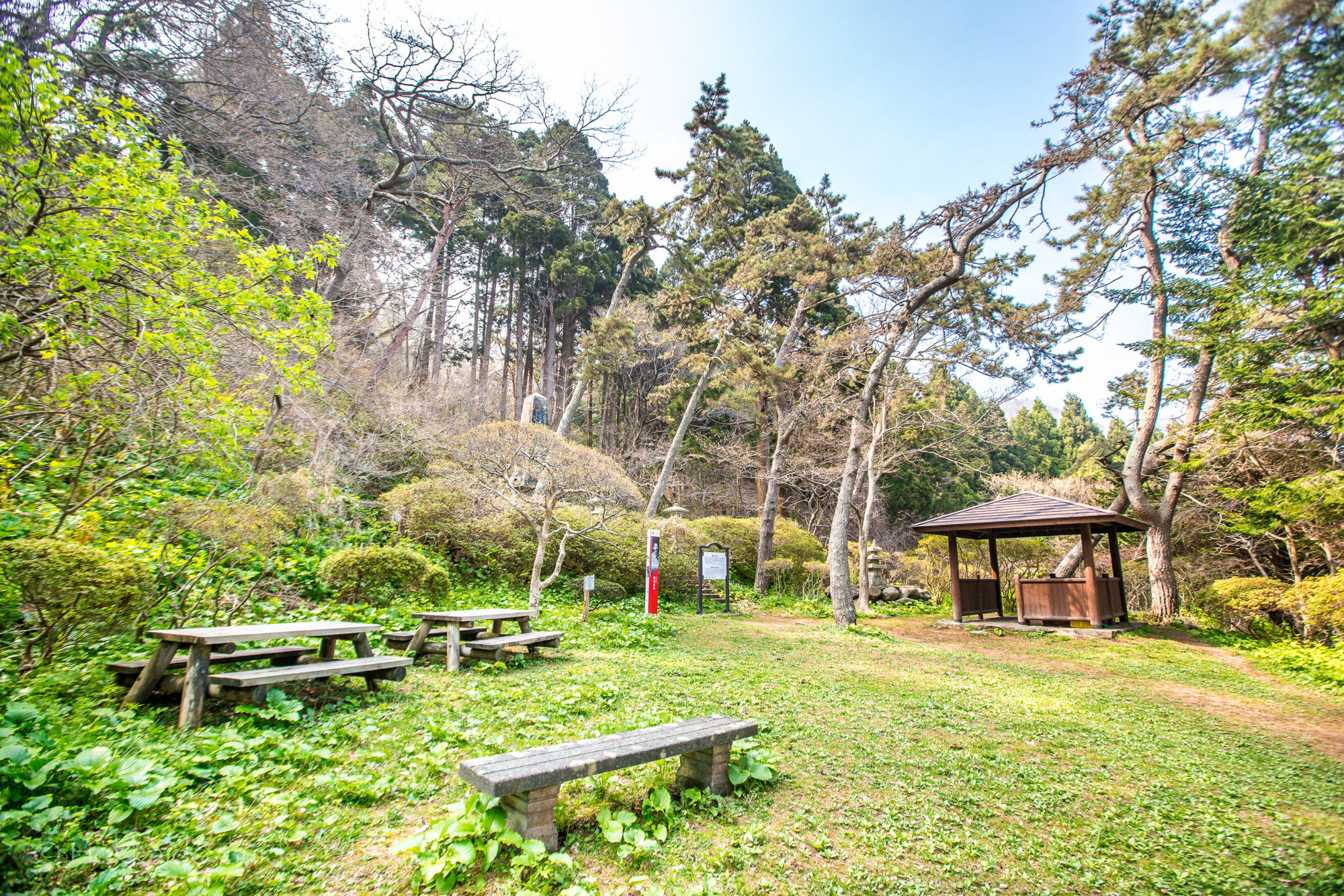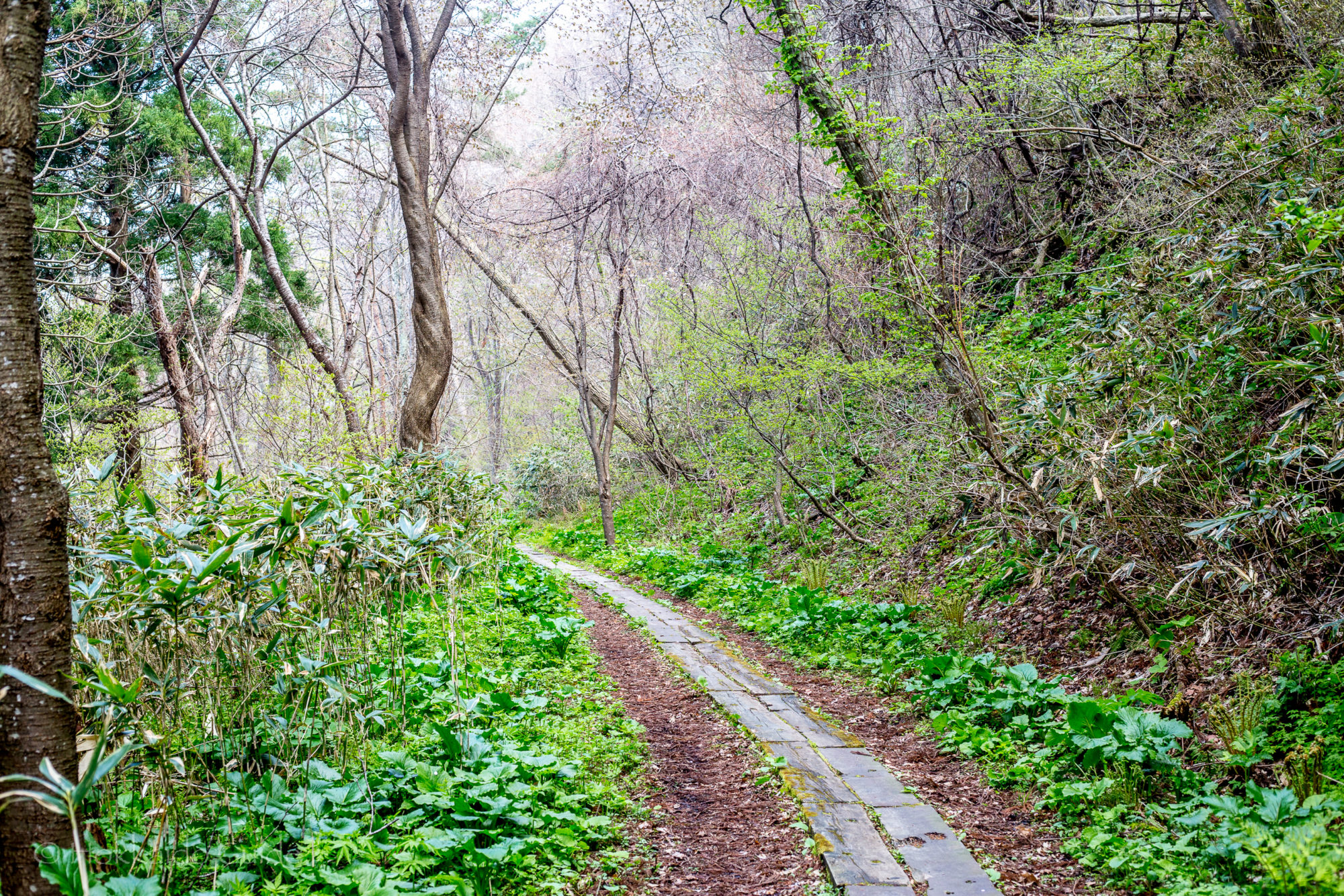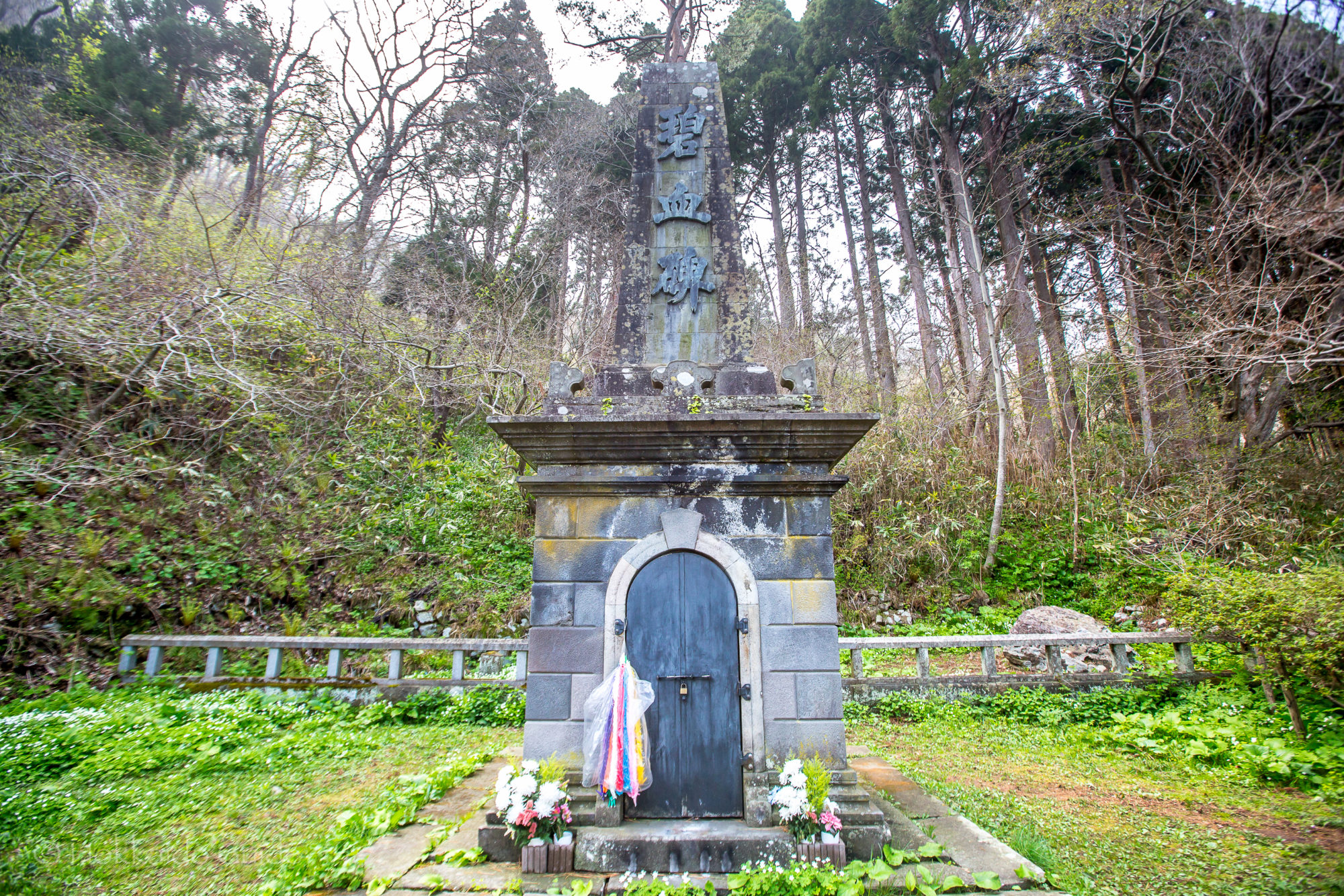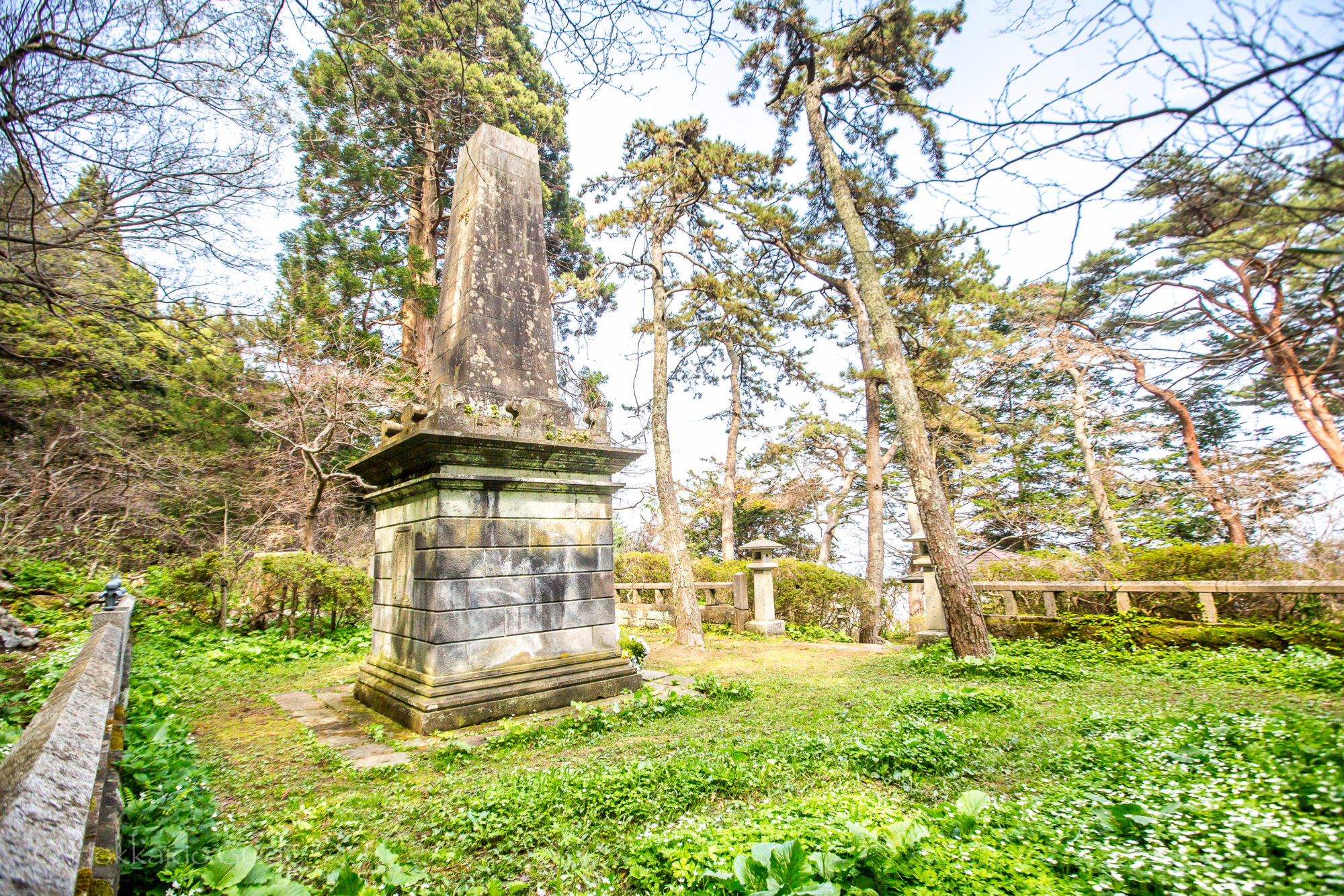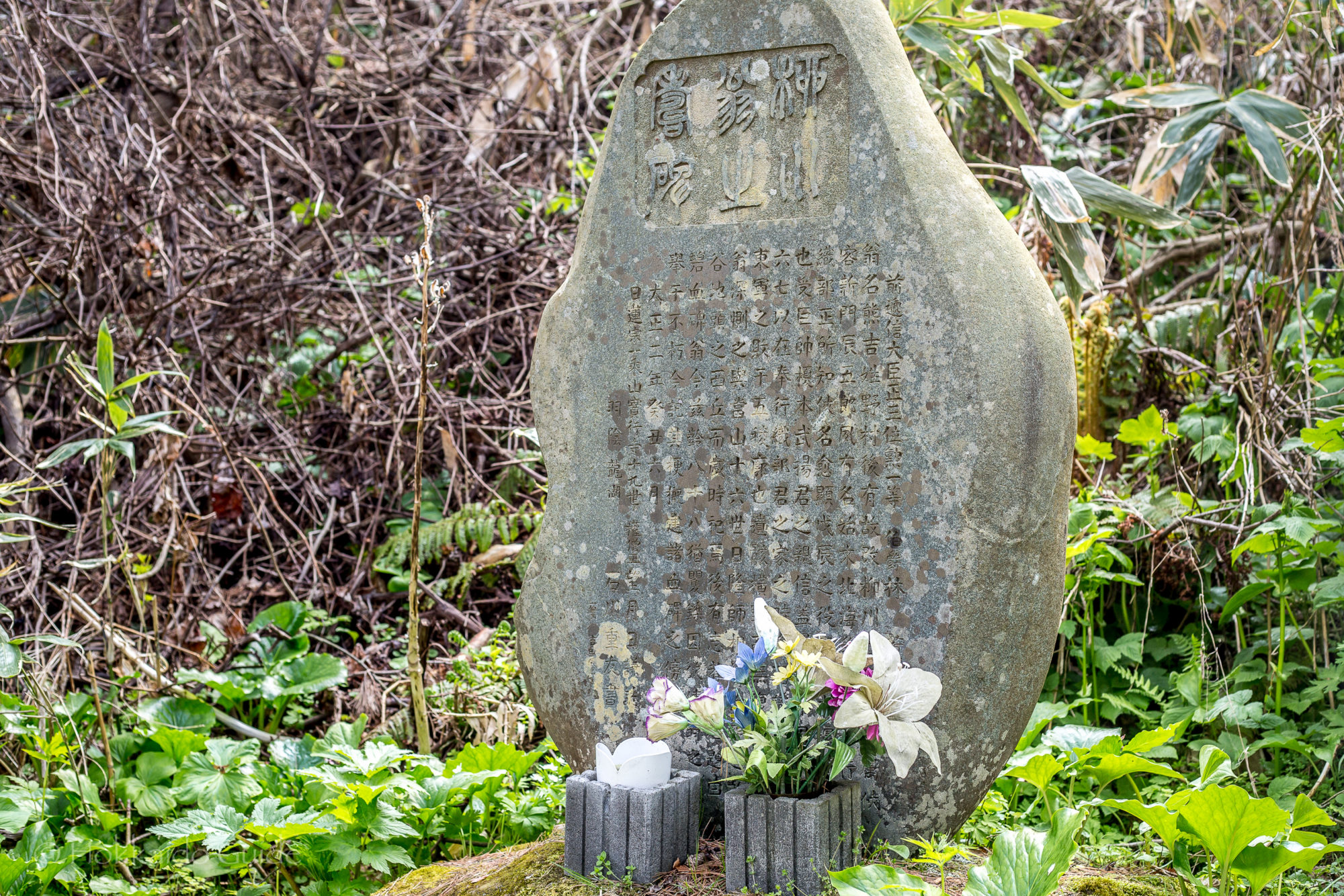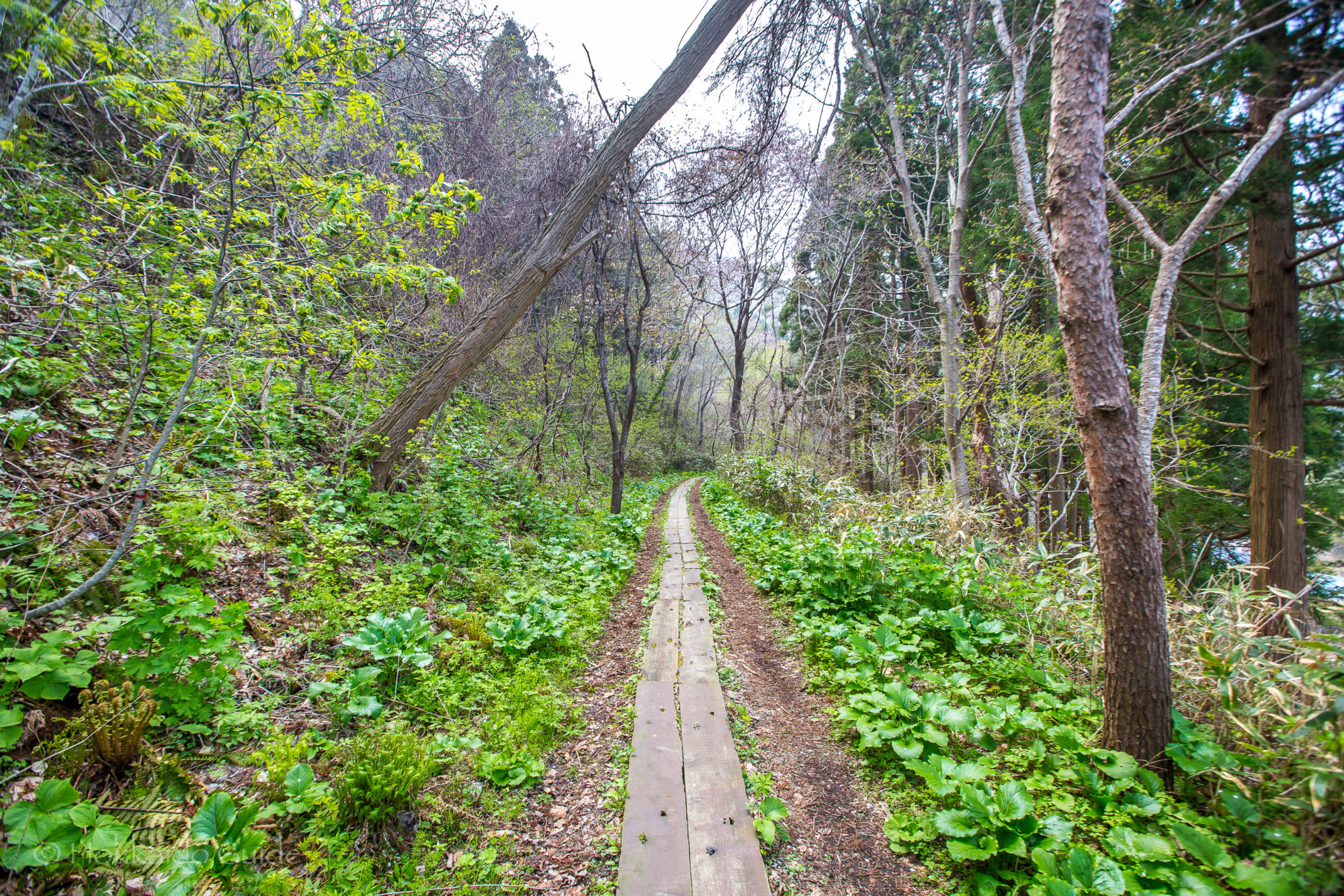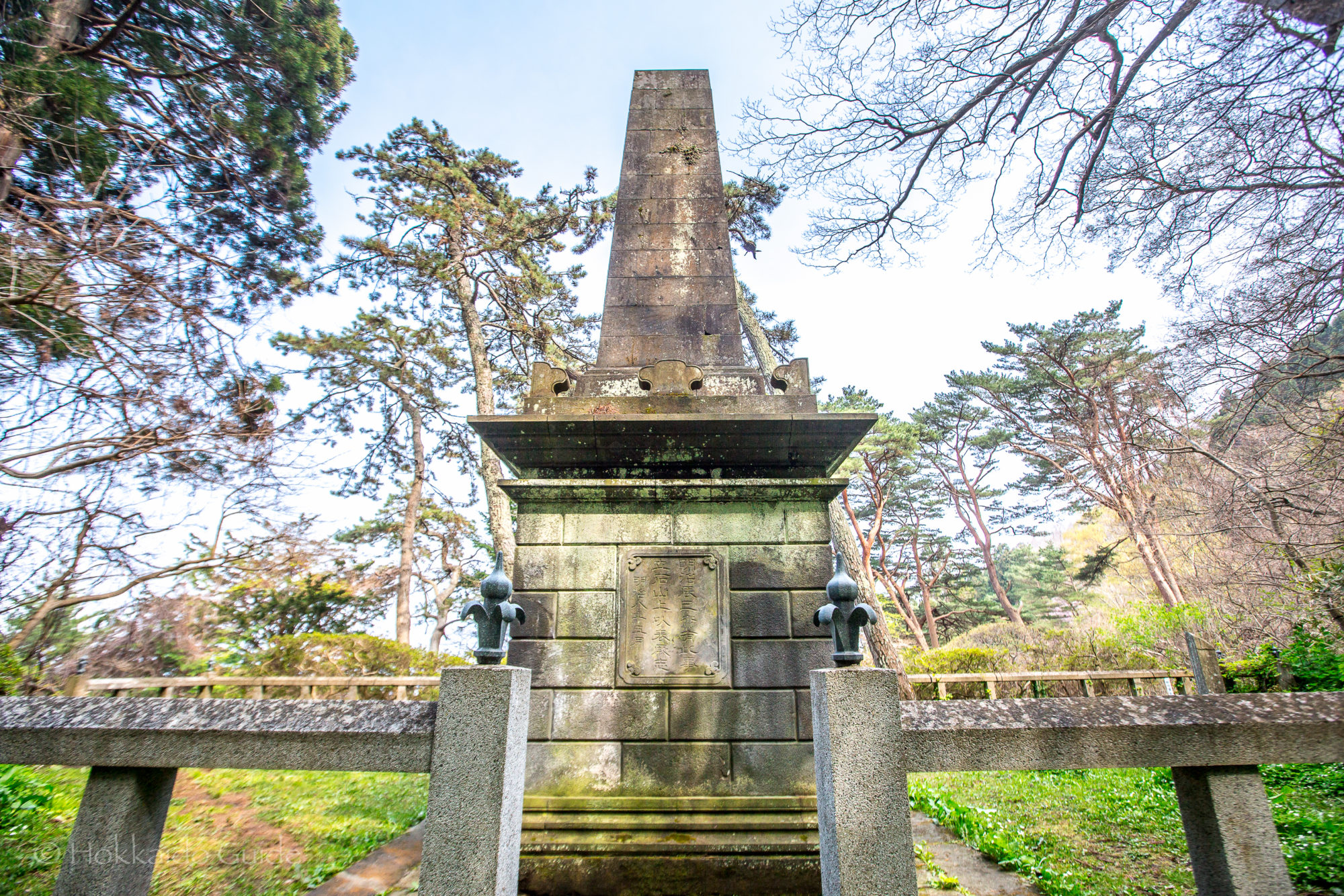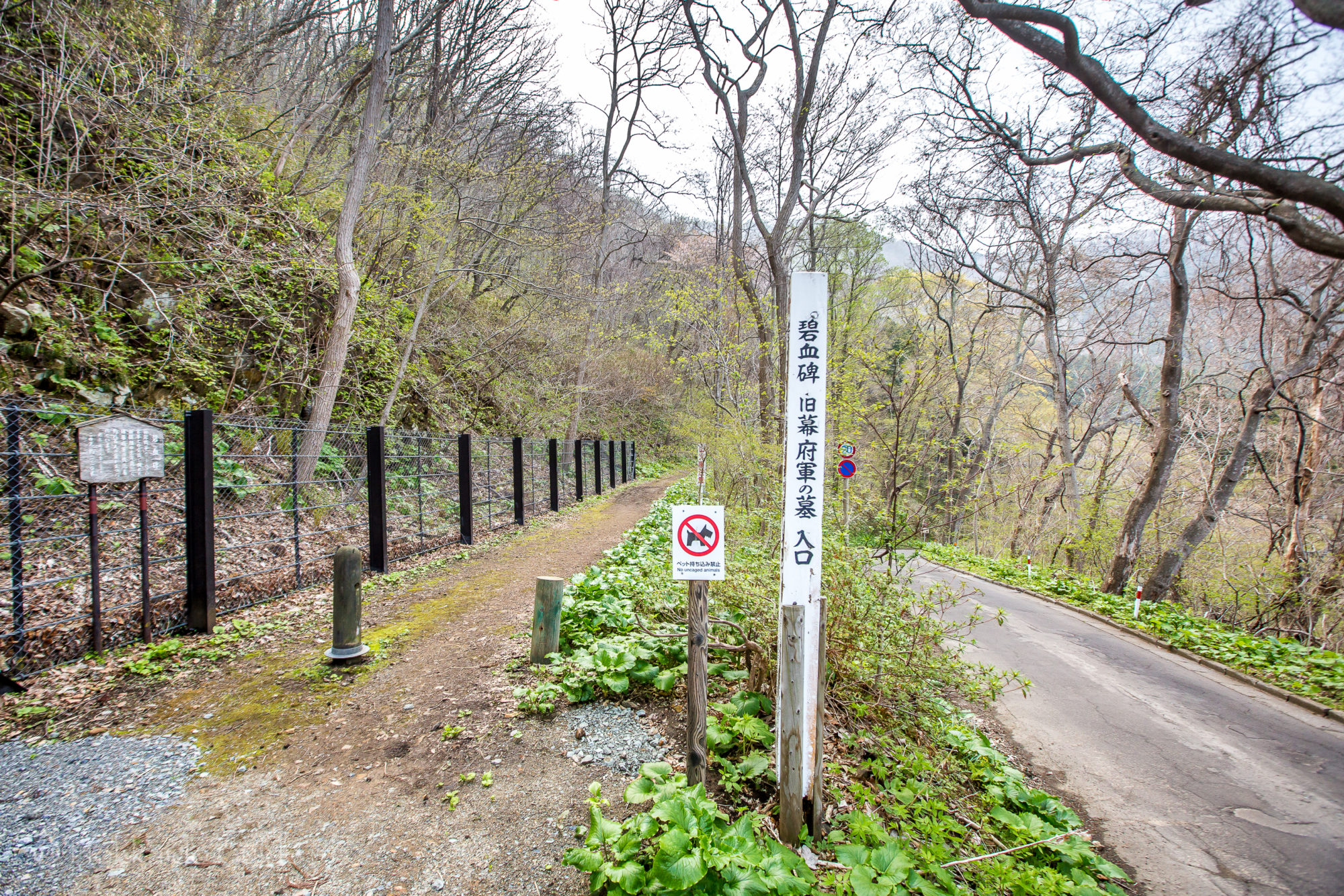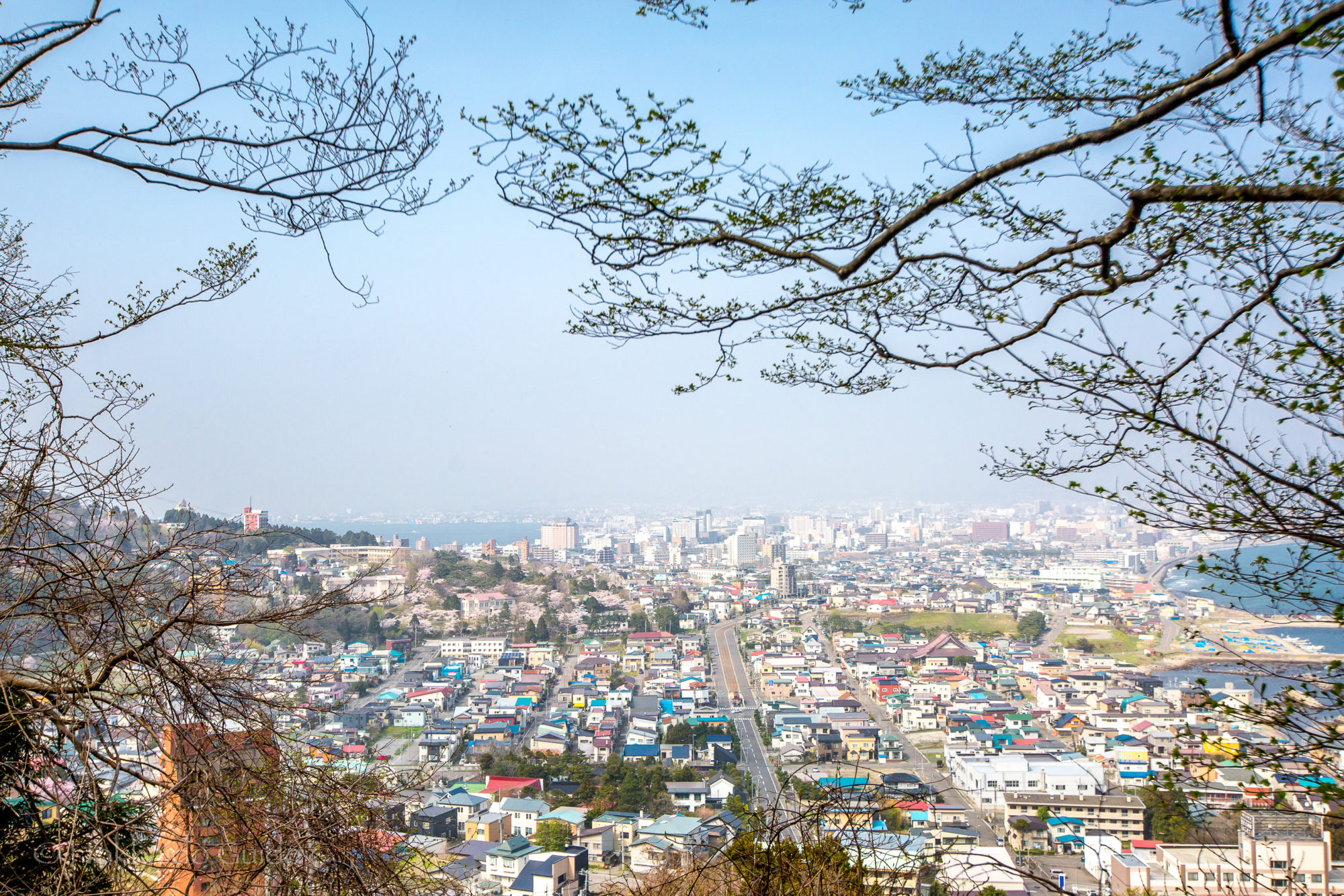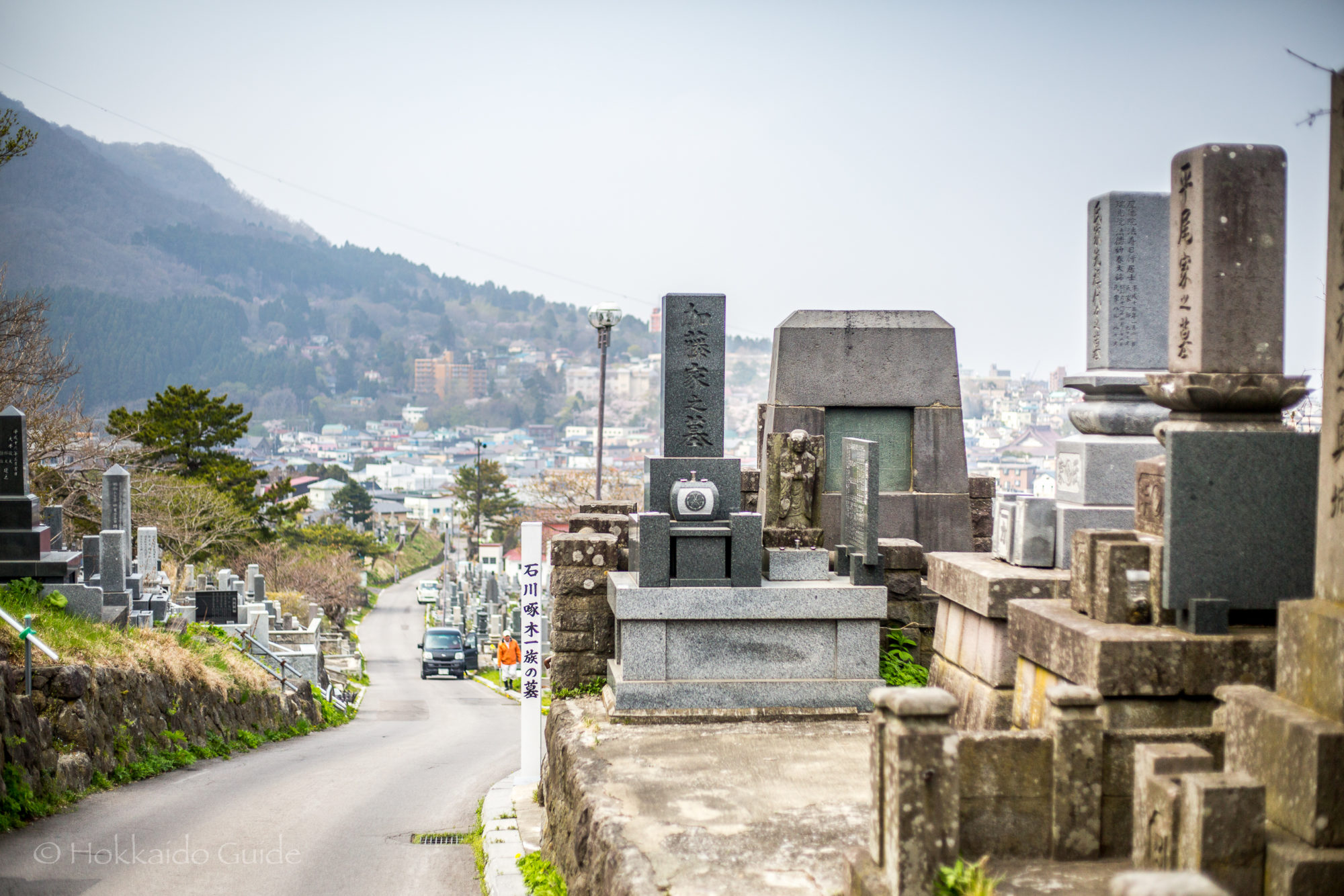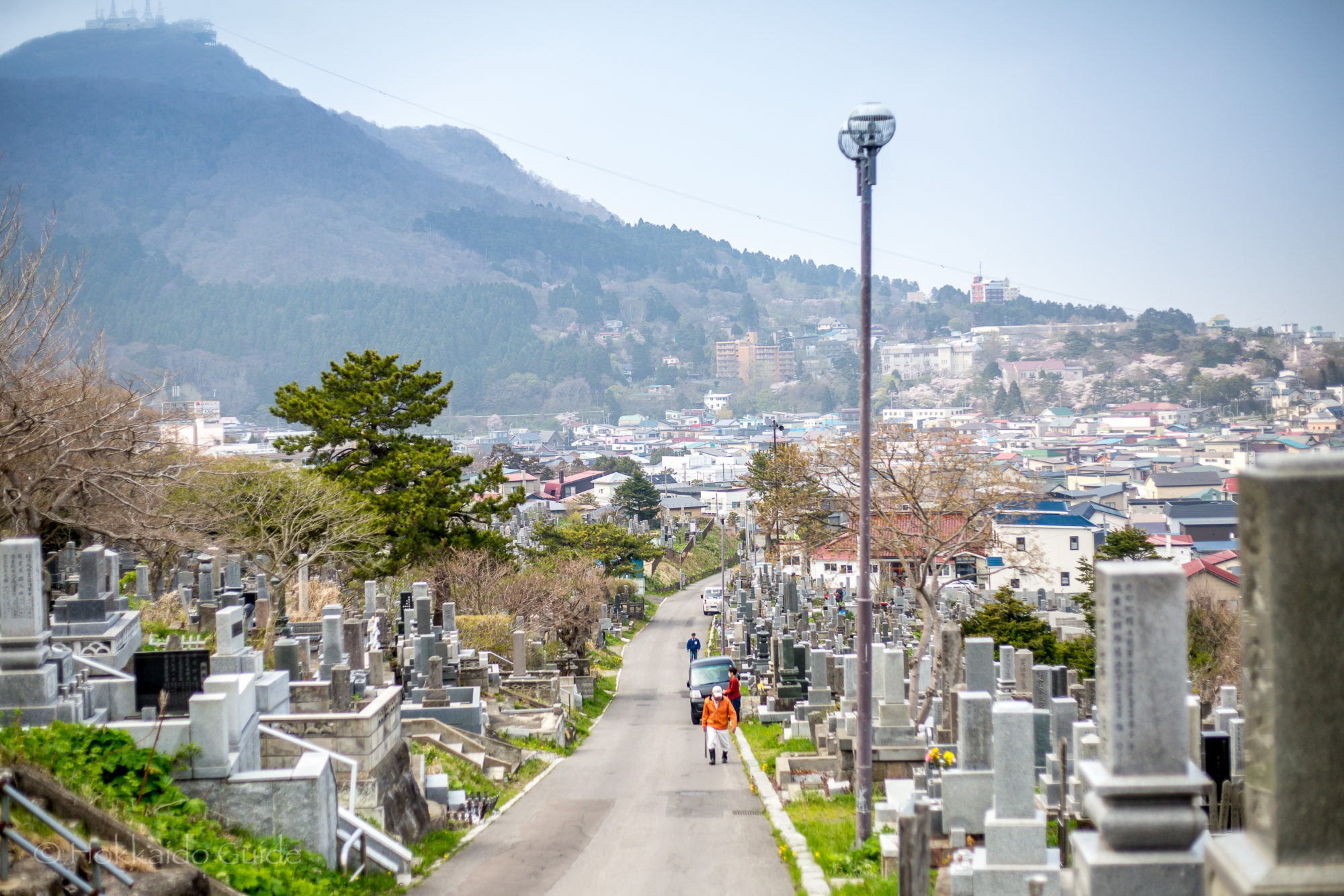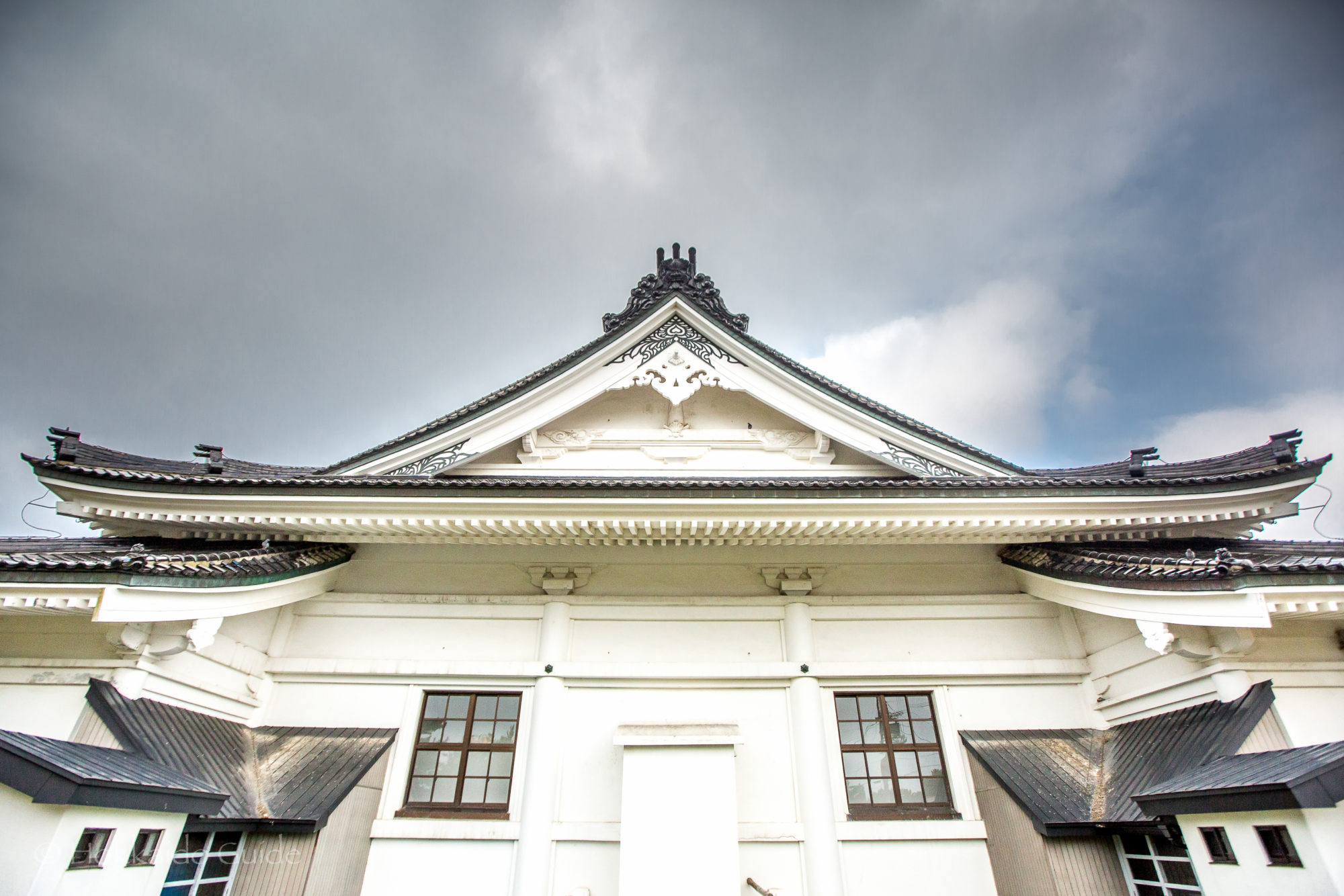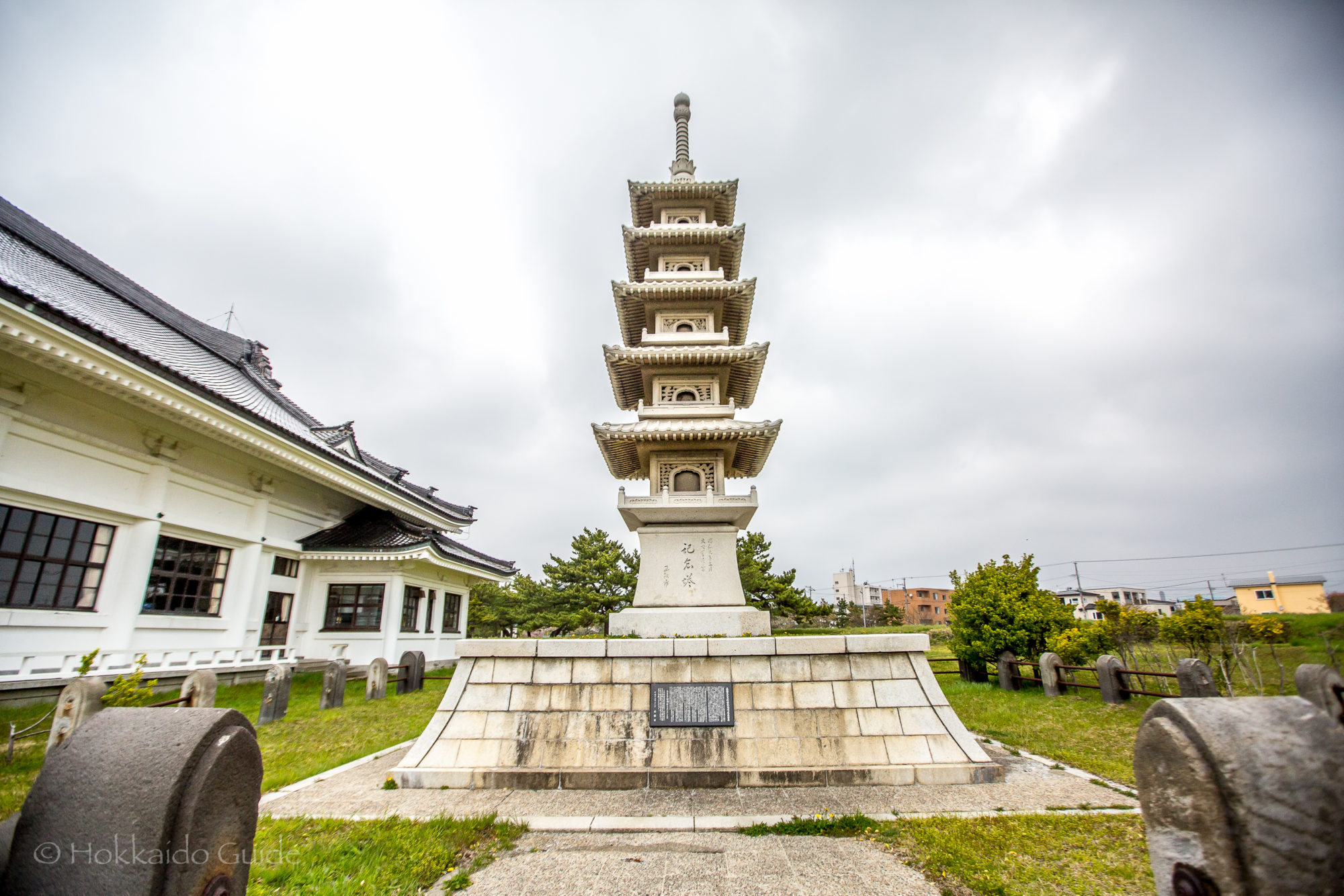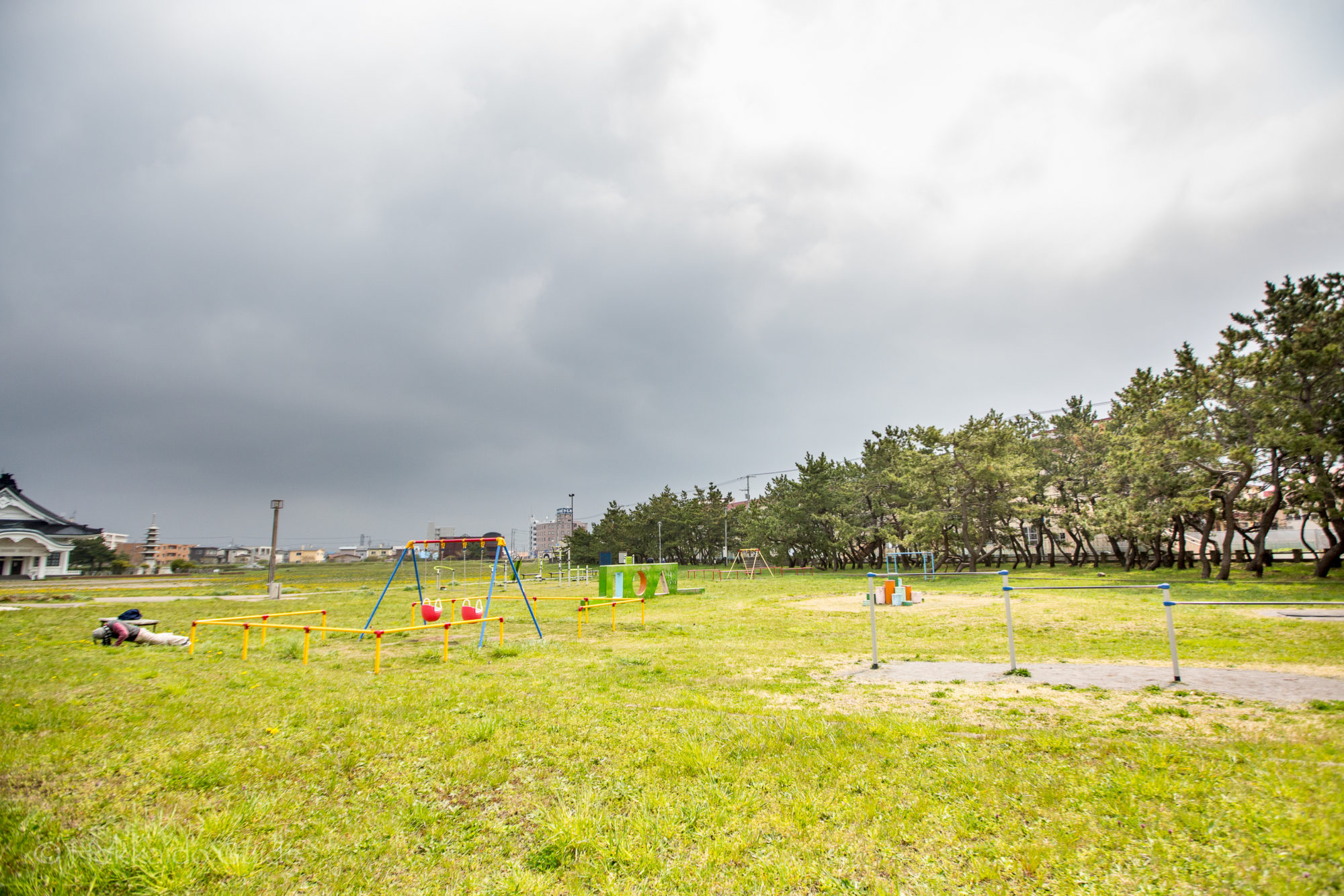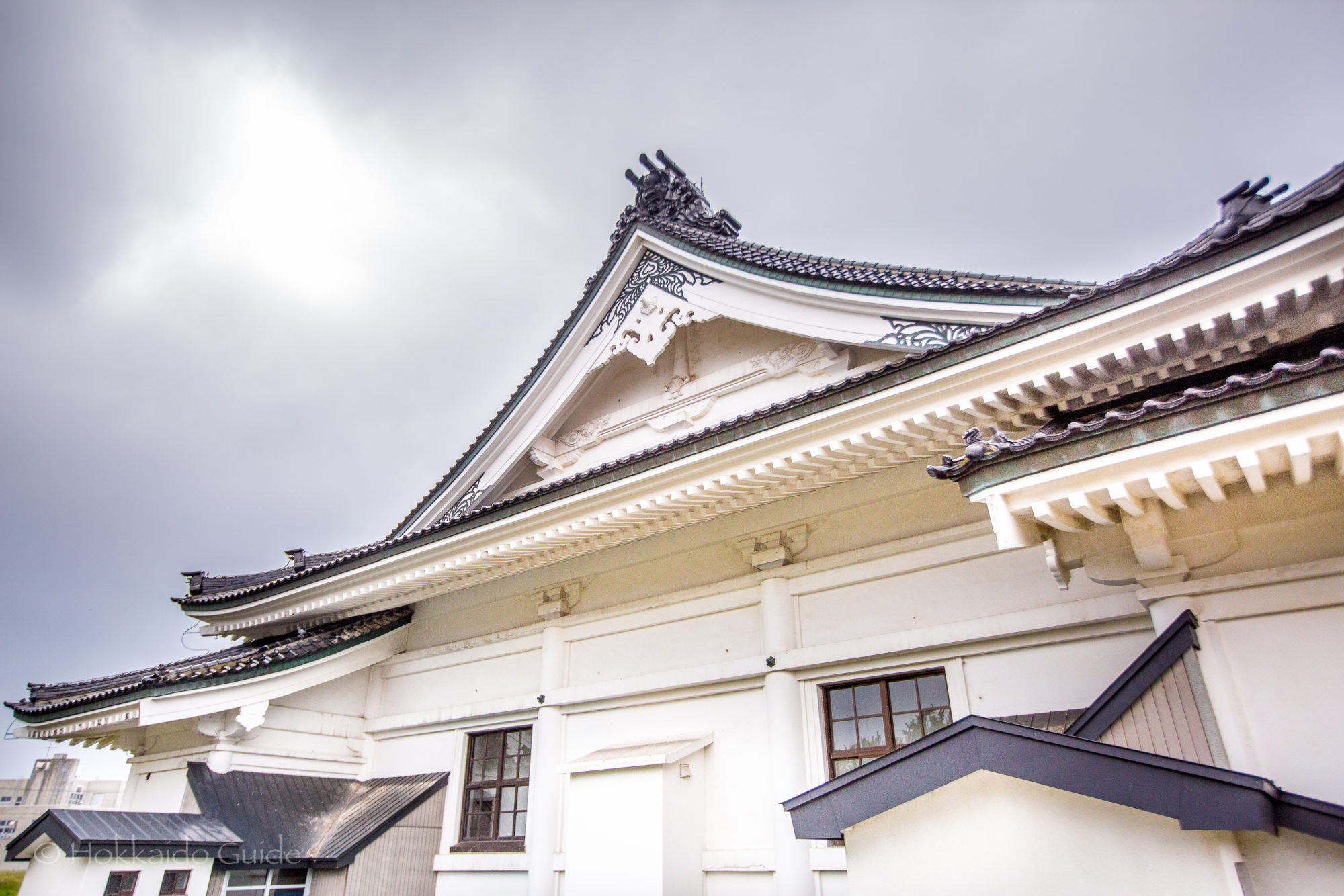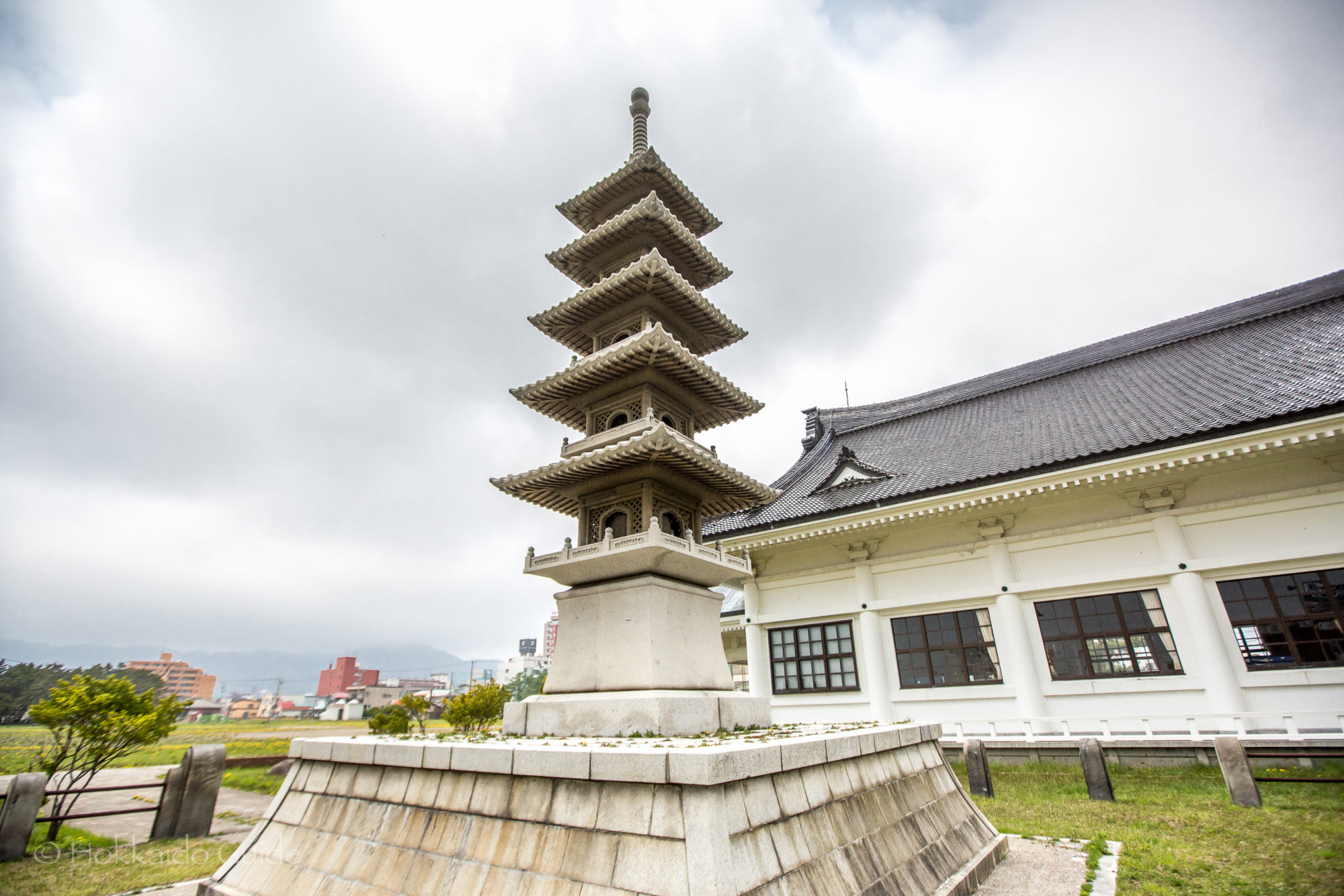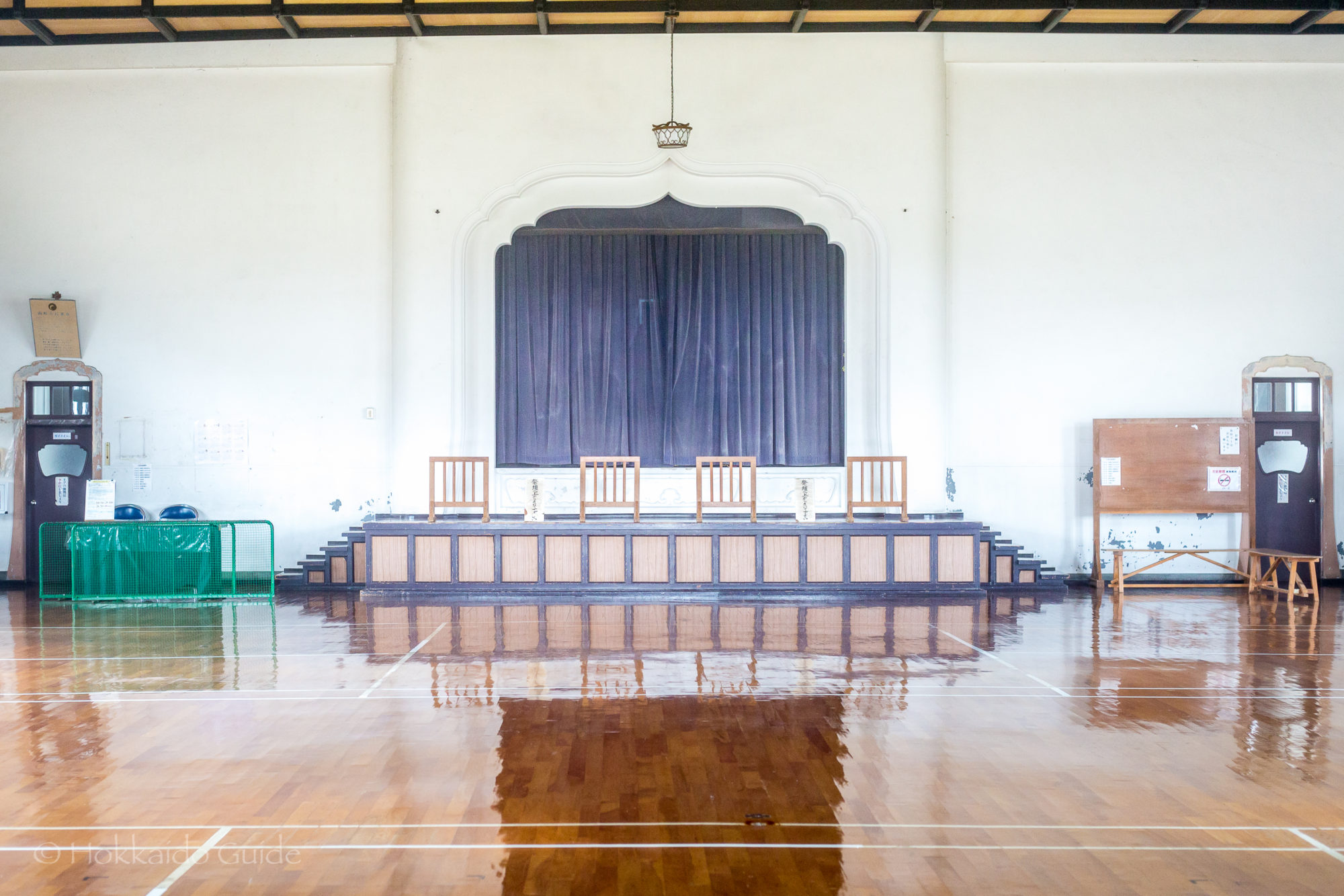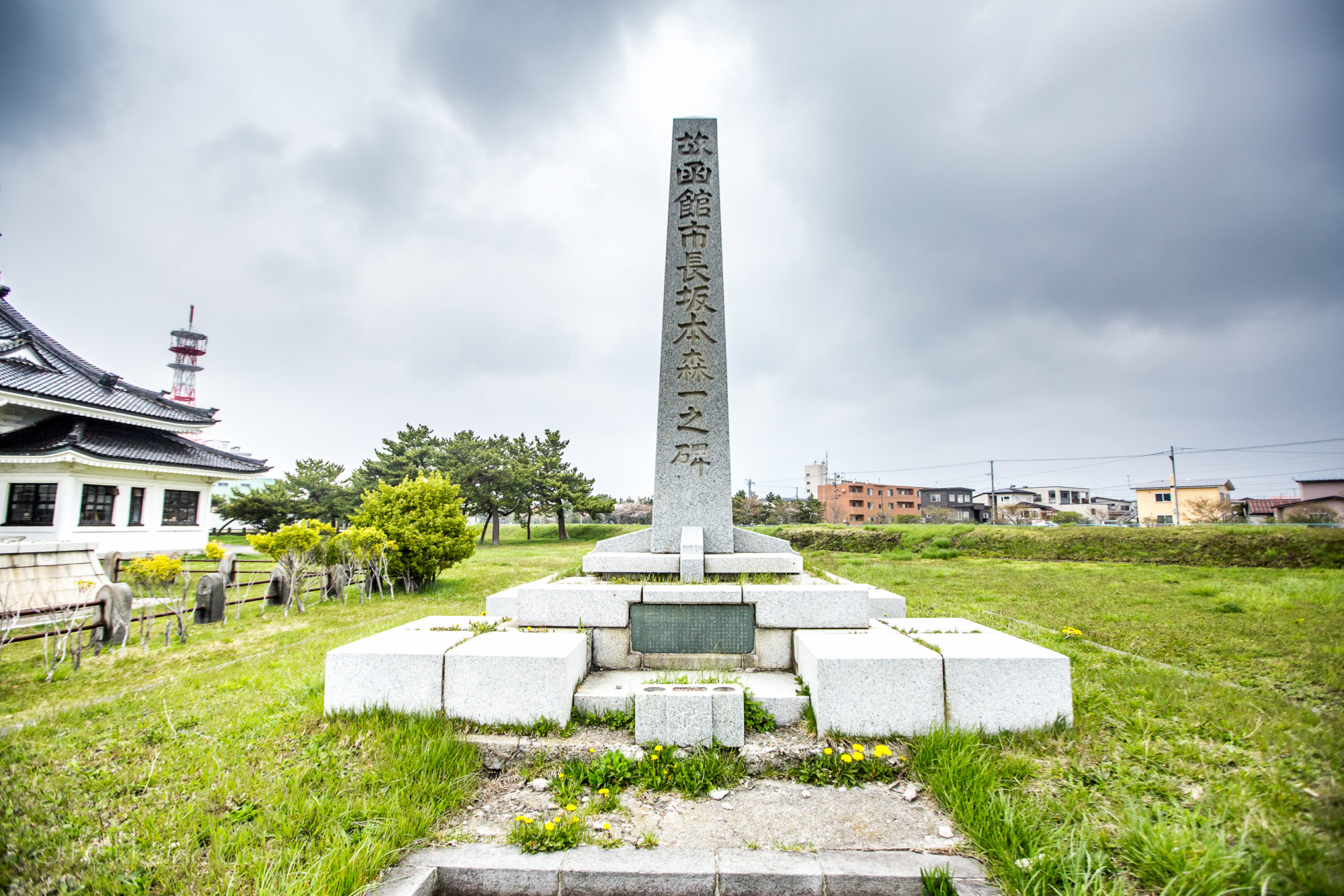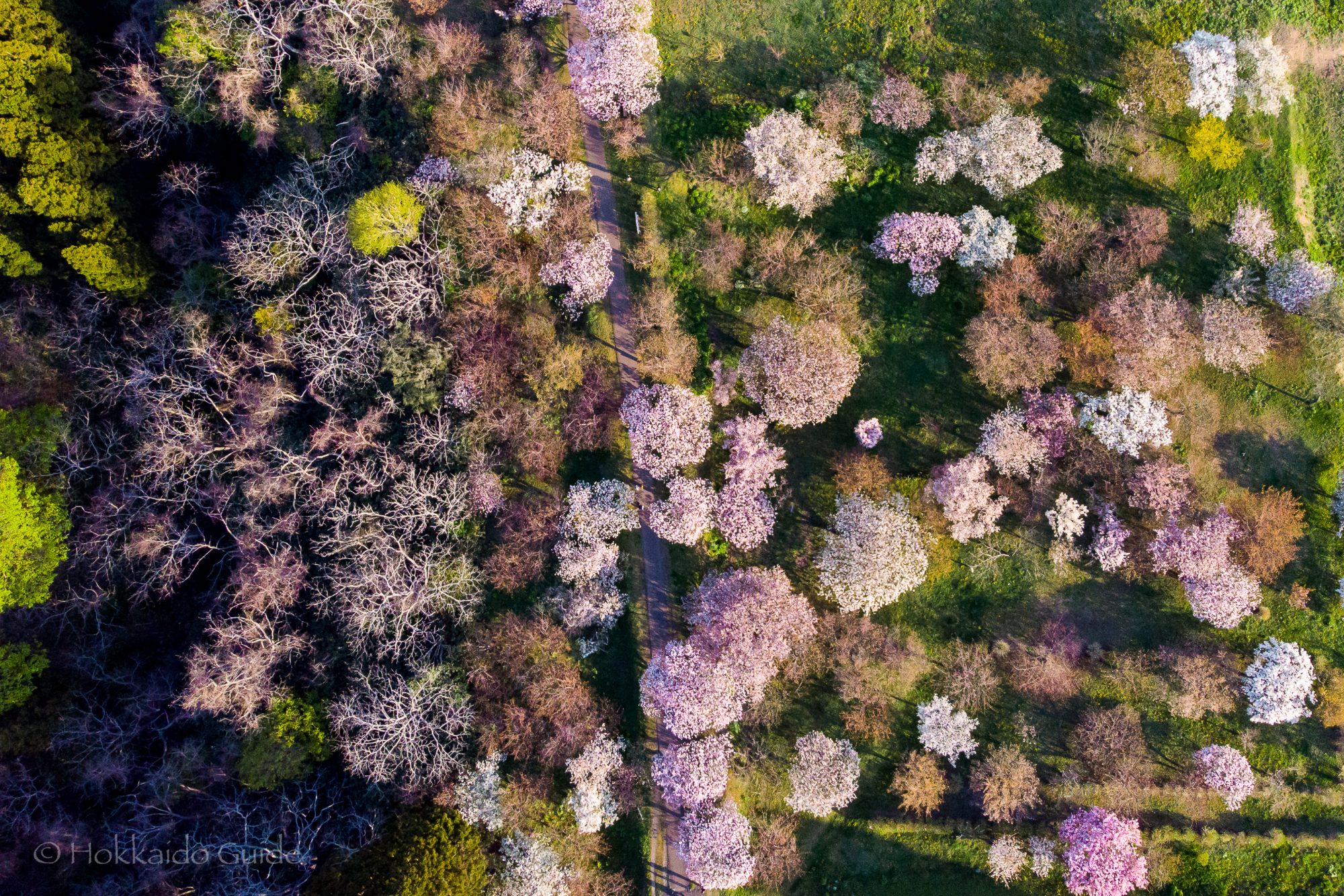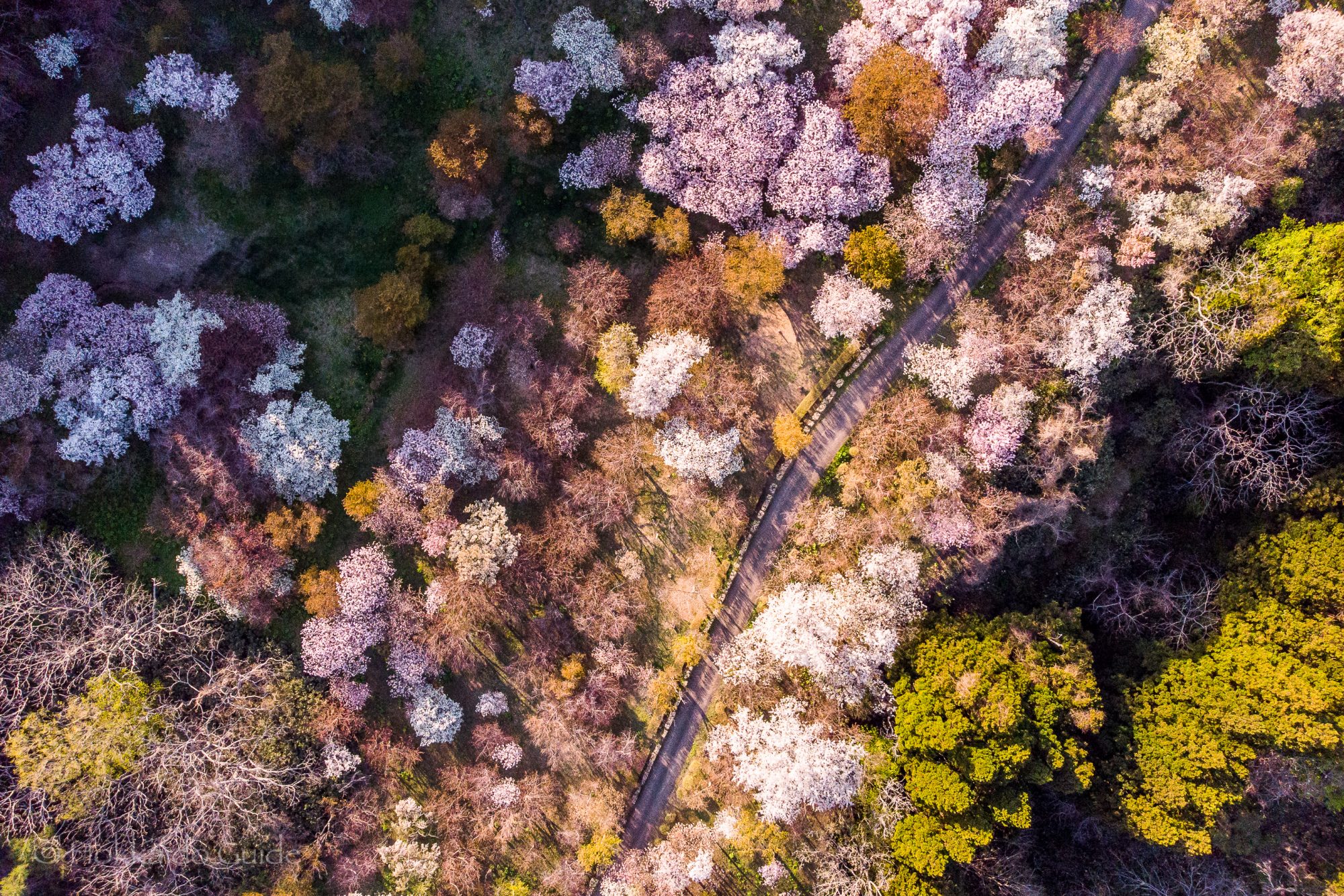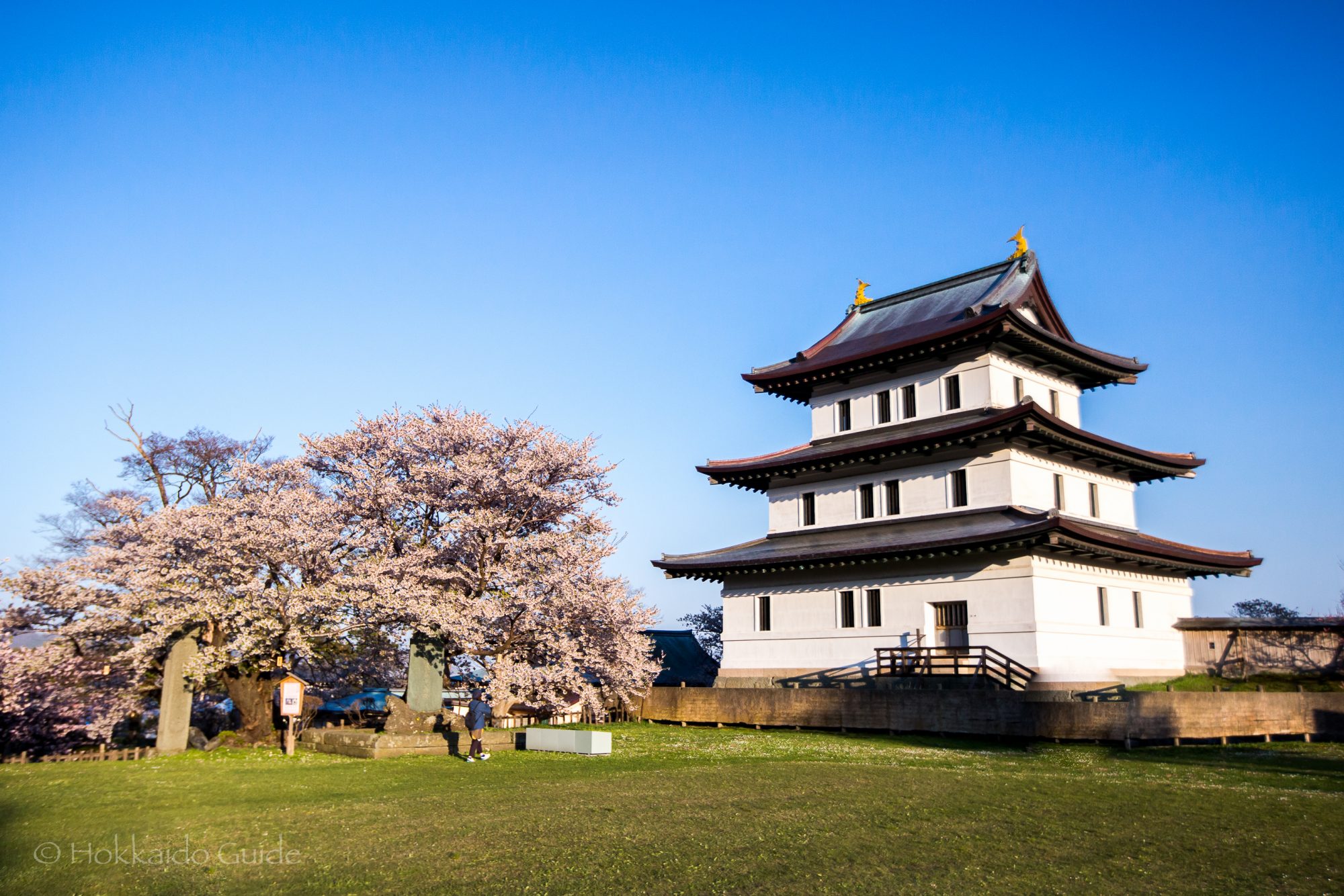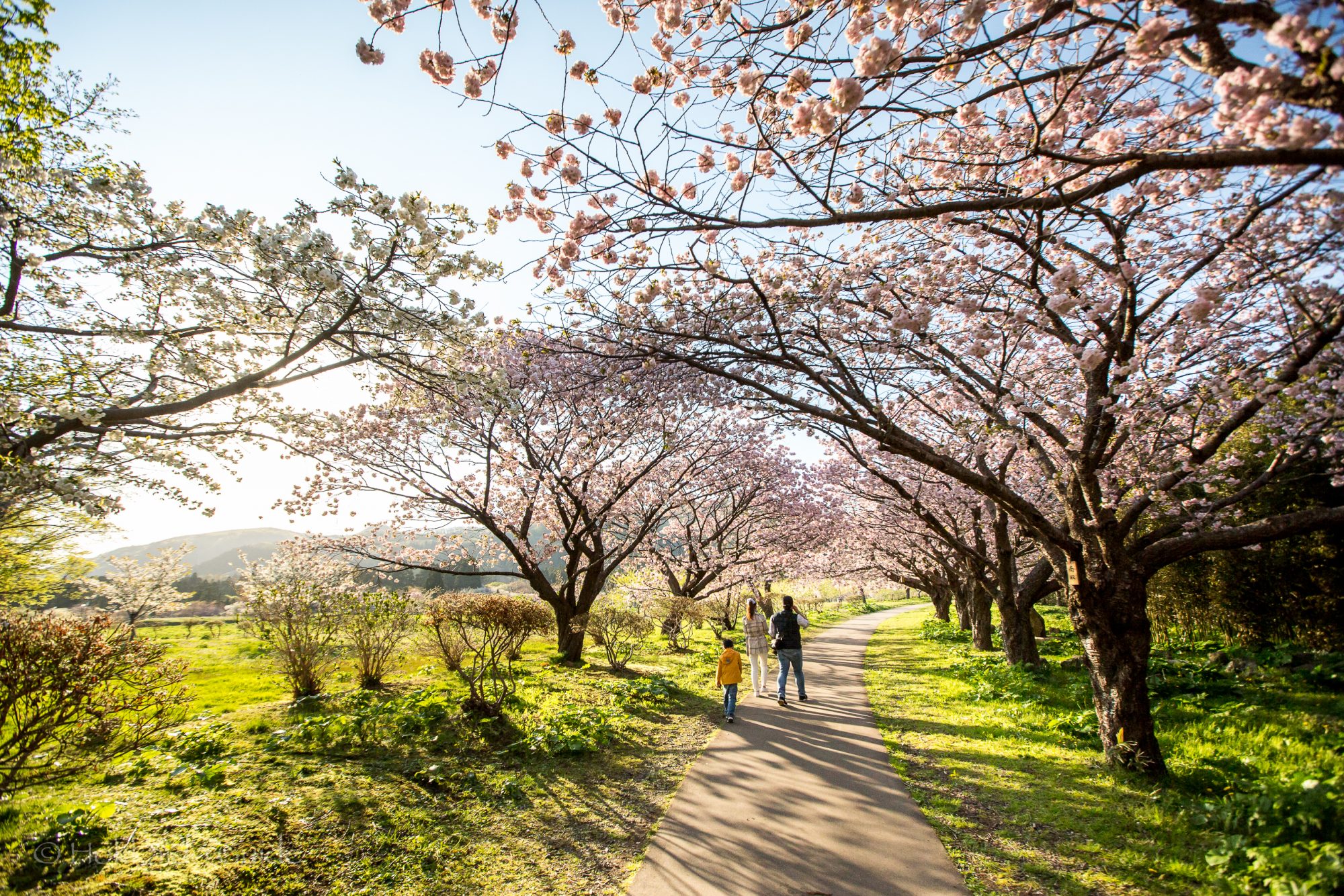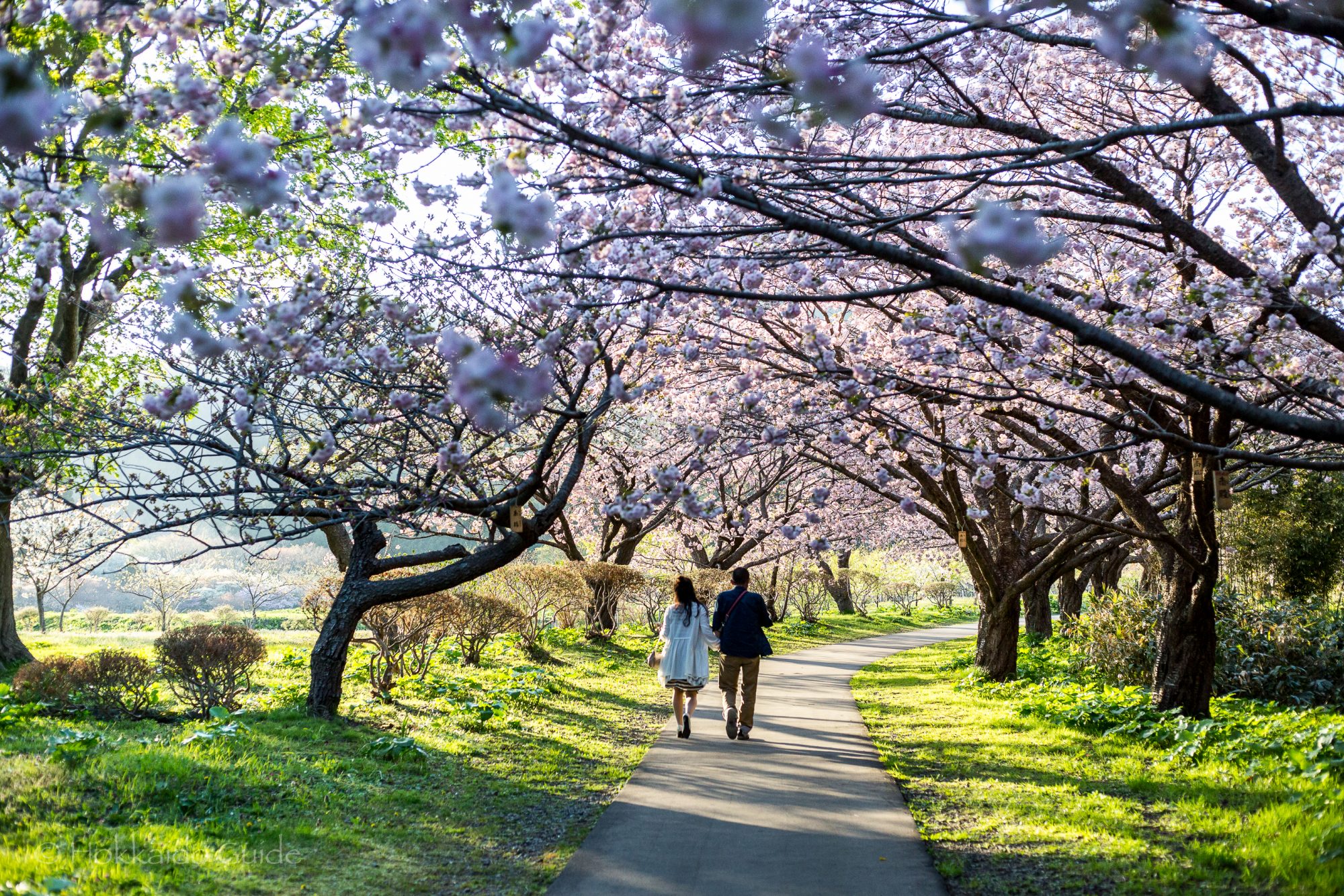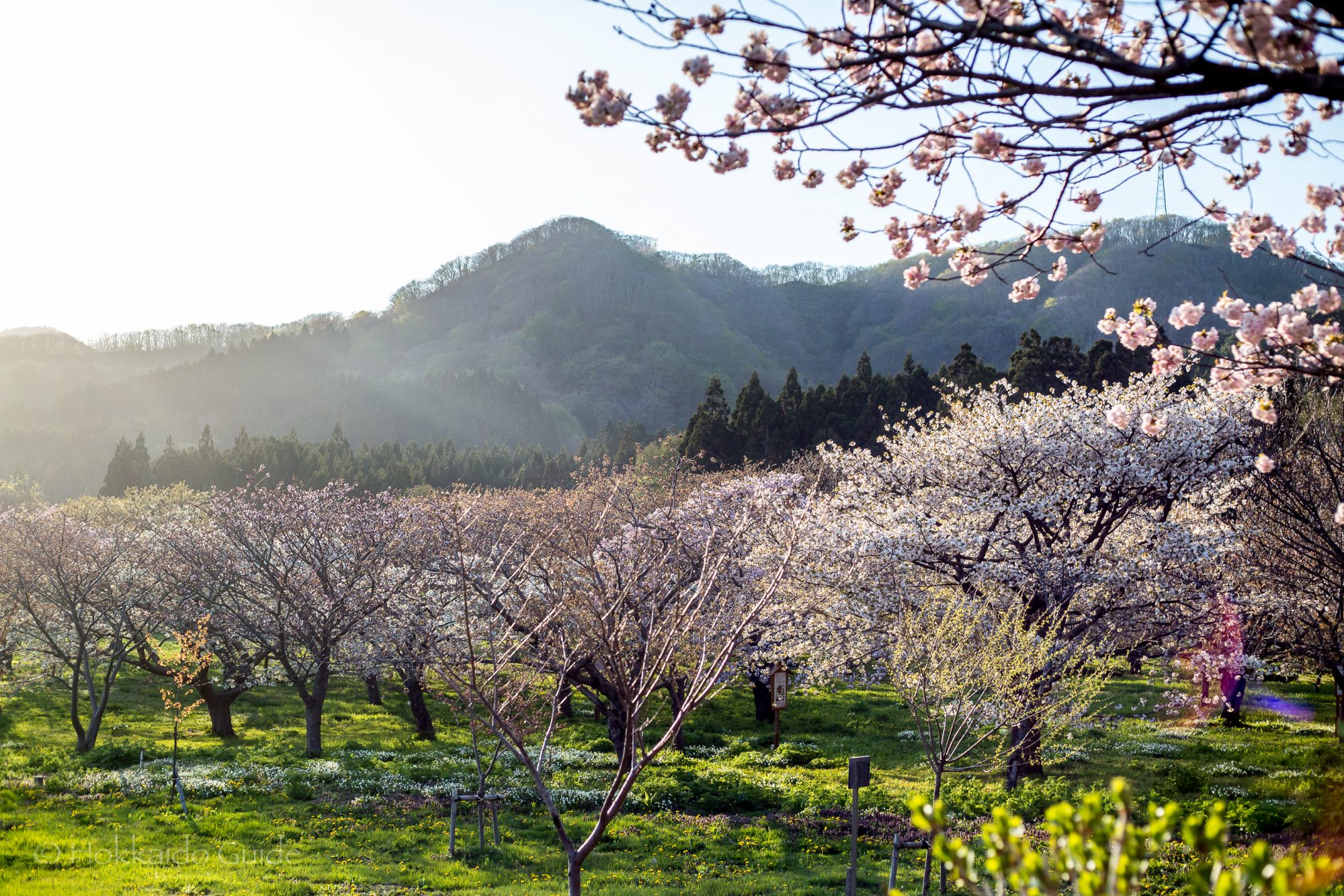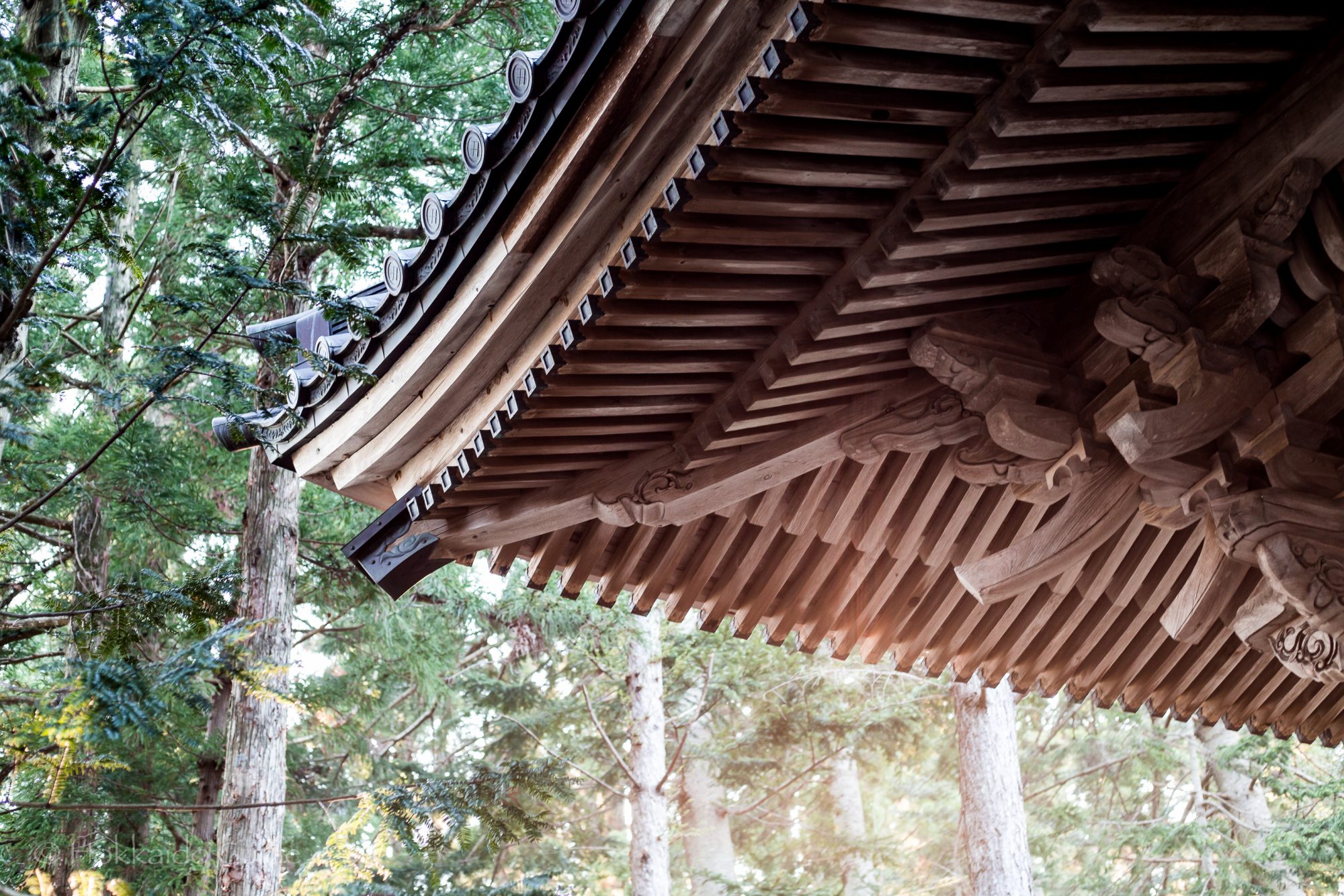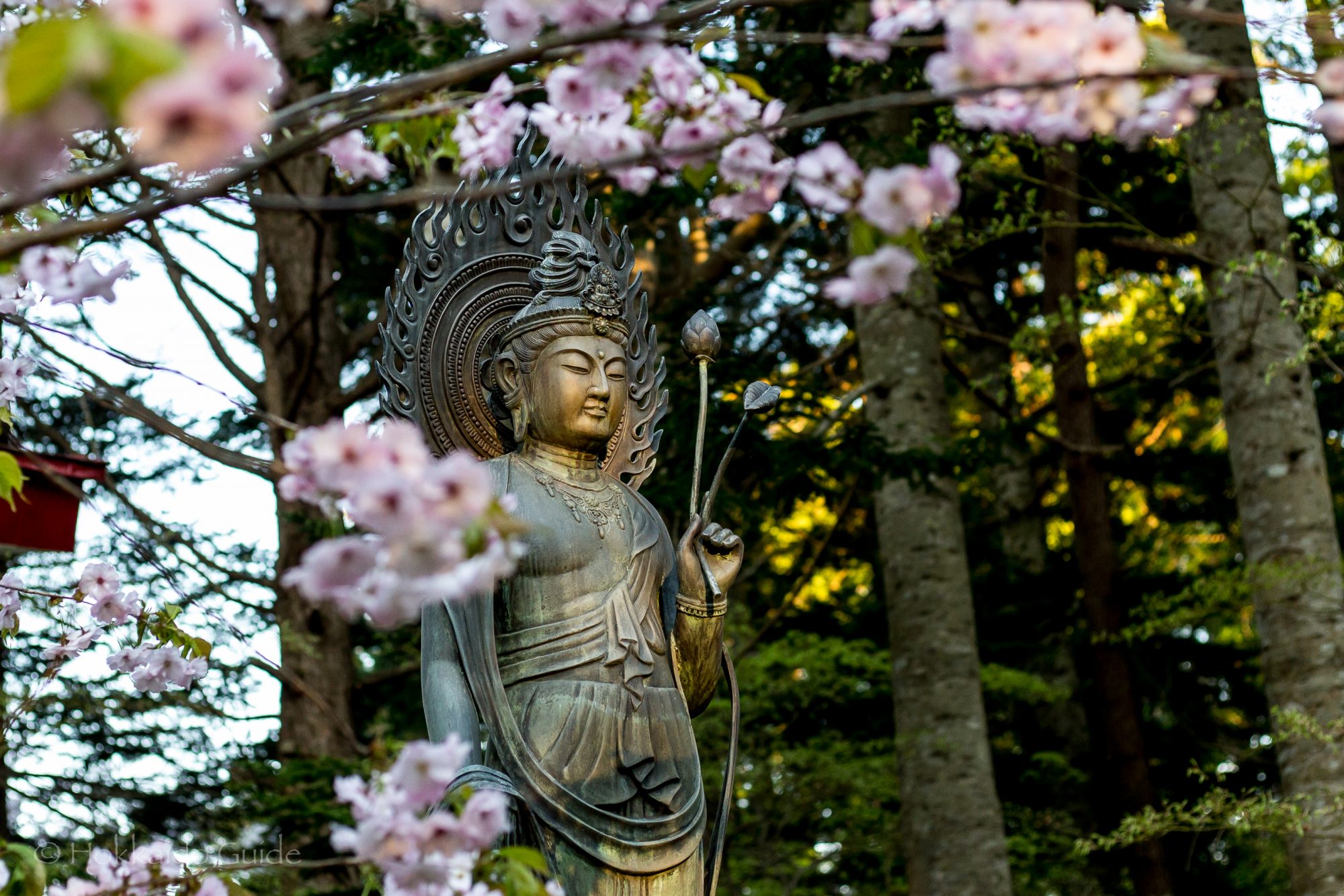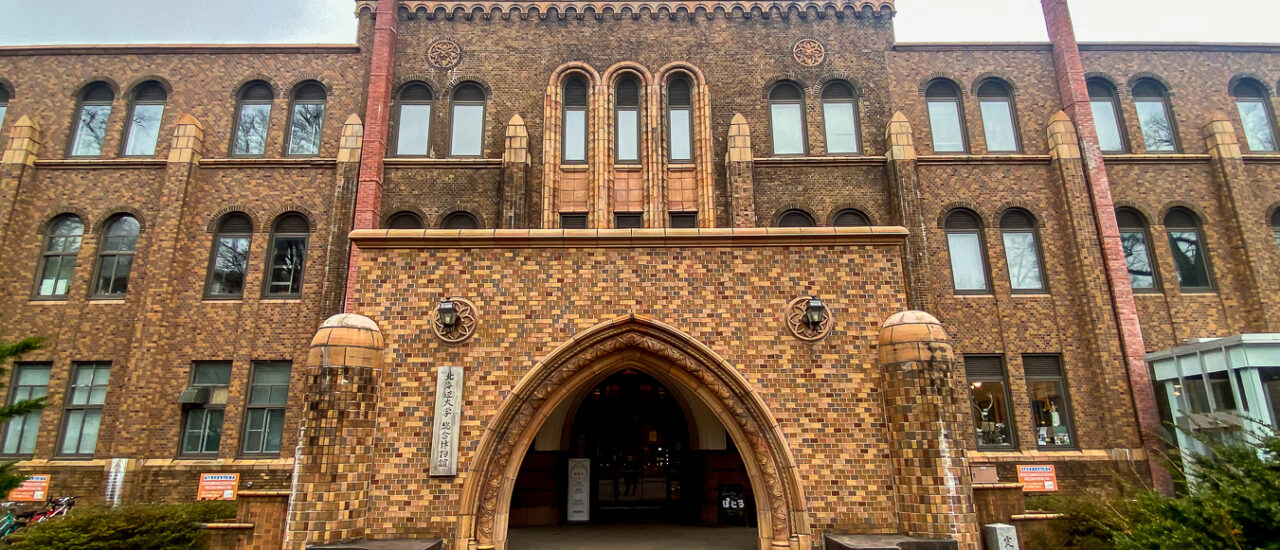
Tag: Cemetery

Funbe Falls

| Admission | Free |
| Opening Hours | Open 24 hours |
| Contact | - |
| Notes | Sightseeing spot , no parking |
| Location / Getting There | The falls are a 5 minute drive before arriving in the town of Hiroo. They are a 45 minute drive from Cape Erimo, and are on route 336 across from the ocean. Funbe, Hiroo, Hiroo District, Hokkaido 089-2634 |
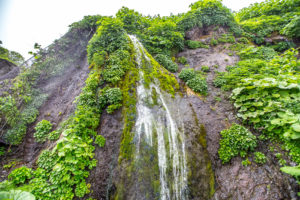 From Cape Erimo to the small town of Hiroo, there is a road that winds its way along the coast. Just fifteen minutes before the town of Hiroo, you can find the Funbe Falls. The road (route 336), that these falls are by, is known as the ‘Golden Road’. This road was originally started in 1798 and cut through the steep and craggy Hidaka mountains. It is called the Golden Road, as it cost a lot of money to make and through trade, the road spread gold. On one side of the road is the rough Pacific Ocean and on the other, is the cliffs of the Hidaka mountains that spreads deep into central Hokkaido. These mountains spread for 140 km and it is from the base of these mountains that the Funbe Falls flow all year round.
From Cape Erimo to the small town of Hiroo, there is a road that winds its way along the coast. Just fifteen minutes before the town of Hiroo, you can find the Funbe Falls. The road (route 336), that these falls are by, is known as the ‘Golden Road’. This road was originally started in 1798 and cut through the steep and craggy Hidaka mountains. It is called the Golden Road, as it cost a lot of money to make and through trade, the road spread gold. On one side of the road is the rough Pacific Ocean and on the other, is the cliffs of the Hidaka mountains that spreads deep into central Hokkaido. These mountains spread for 140 km and it is from the base of these mountains that the Funbe Falls flow all year round.
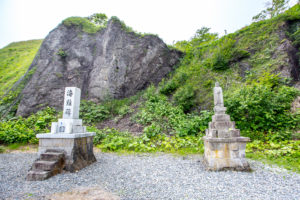 The Golden Road, after rock fall stopped traffic, was renovated and completed in 1981 due to avalanches from the cliffs. The waterfall is not that big and can be easily missed. It is just before a turn in the road and although there is no parking, there is room to stop off on the road side. The falls are surrounded by small headstones and shrines. These shrines are decorated with flowers and make for a good photo. There are a couple of signs with information about the Golden Road and surrounding mountains, but these are only in Japanese. Open all year round, the falls freeze over in winter and also make for a good photo.
The Golden Road, after rock fall stopped traffic, was renovated and completed in 1981 due to avalanches from the cliffs. The waterfall is not that big and can be easily missed. It is just before a turn in the road and although there is no parking, there is room to stop off on the road side. The falls are surrounded by small headstones and shrines. These shrines are decorated with flowers and make for a good photo. There are a couple of signs with information about the Golden Road and surrounding mountains, but these are only in Japanese. Open all year round, the falls freeze over in winter and also make for a good photo.
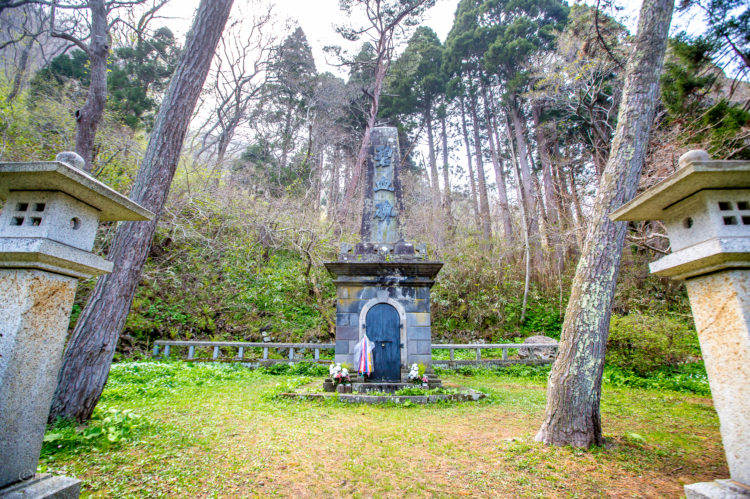
Hekketsu-hi Monument
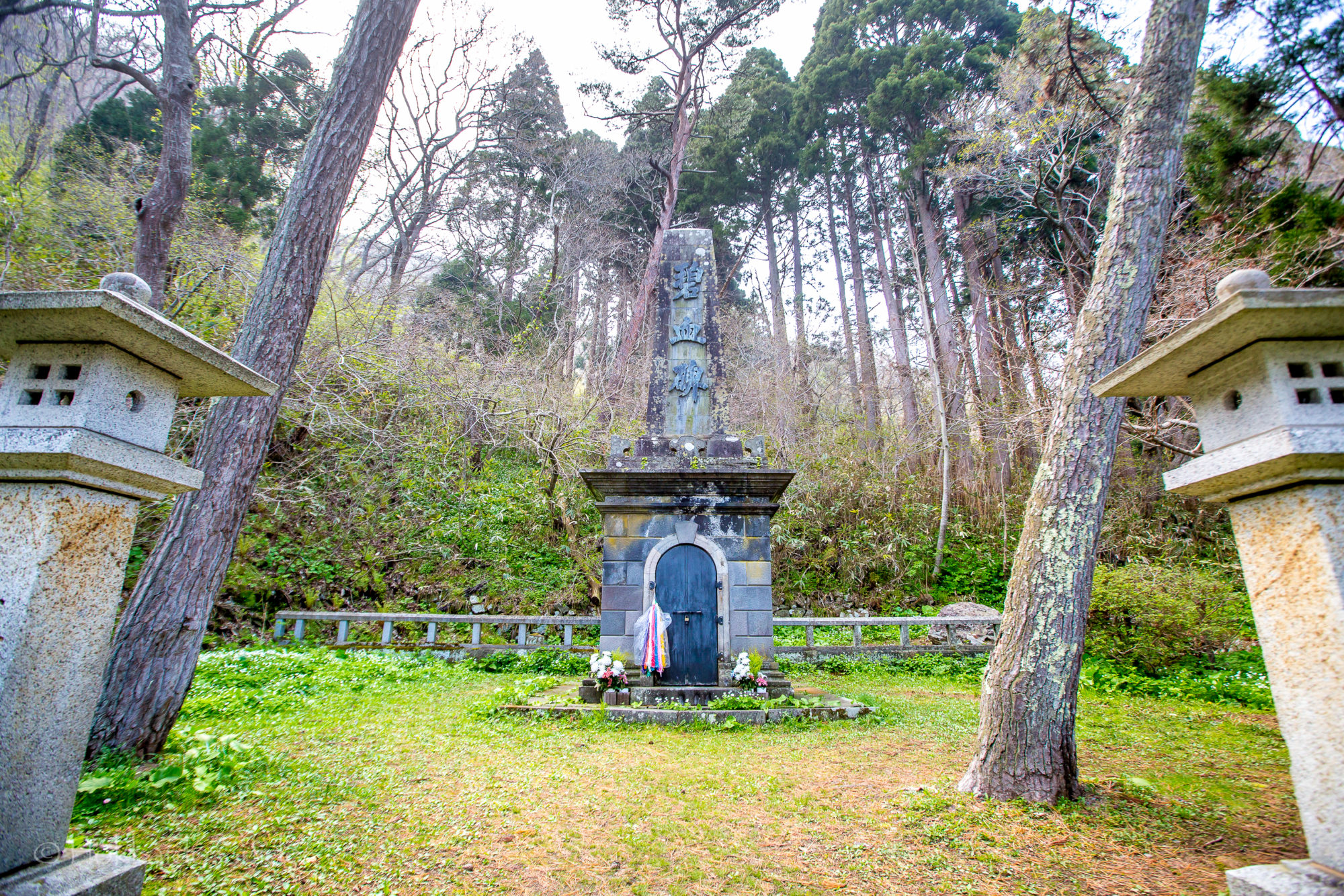
| Admission | Free |
| Opening Hours | - |
| Contact | - |
| Notes | Historical site, no parking |
| Location / Getting There | Located in the southern part of Hakodate city near the base of Mt. Hakodate. There is no parking here so it's a little tricky but you can find some parking around the shrines nearby and take the path up to the site. For public transport, it is a 15 minute walk uphill from Yachigashira tram station (seven stops from Hakodate tram station). 5-14 Yachigashiracho, Hakodate, Hokkaido 040-0046 |
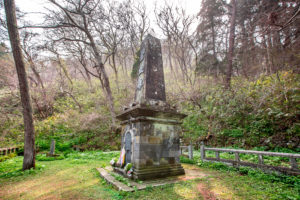 The Hekketsu Monument is the centre piece for the burial and tribute for the 800 samurai and their leaders who died fighting against government forces in the Boshin War. This war included, specifically, the Battle of Hakodate. This battle in 1869 was the samurai’s last stand. The government forces were intent on restoring the emperor to the throne and overthrowing the military rule of the Shogunate and the samurai. The monument here is made from stone brought up from Tokyo. The word ‘Hekketsu’ is derived from an old Chinese saying, “the blood of warriors who die for their lord turns blue after three years.”
The Hekketsu Monument is the centre piece for the burial and tribute for the 800 samurai and their leaders who died fighting against government forces in the Boshin War. This war included, specifically, the Battle of Hakodate. This battle in 1869 was the samurai’s last stand. The government forces were intent on restoring the emperor to the throne and overthrowing the military rule of the Shogunate and the samurai. The monument here is made from stone brought up from Tokyo. The word ‘Hekketsu’ is derived from an old Chinese saying, “the blood of warriors who die for their lord turns blue after three years.”
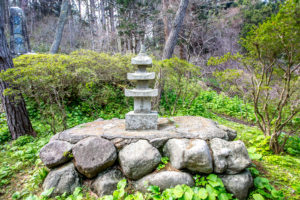 Toshizo Hijikata who led the samurai in the final Battle of Hakodate was killed during this fight. This monument is also erected in his memory. His death poem reads “though my body may decay on the island of Ezo, my spirit guards my lord in the East.” In the aftermath of the battle, the bodies of the Shogunate forces were originally left on the streets and any burial or religious service was prohibited. The bodies were eventually moved to this current site. The government forces dead were buried at Hakodate Gokoku Shrine, which is not a far walk from here. This grassland in the forest is a peaceful and relaxing spot with a quiet stillness and is worth a visit. This site is not far from the shrines lower down on the hill and is better accessed from Gagyusan Myoshin Temple or the shrine of Hachiman-gu.
Toshizo Hijikata who led the samurai in the final Battle of Hakodate was killed during this fight. This monument is also erected in his memory. His death poem reads “though my body may decay on the island of Ezo, my spirit guards my lord in the East.” In the aftermath of the battle, the bodies of the Shogunate forces were originally left on the streets and any burial or religious service was prohibited. The bodies were eventually moved to this current site. The government forces dead were buried at Hakodate Gokoku Shrine, which is not a far walk from here. This grassland in the forest is a peaceful and relaxing spot with a quiet stillness and is worth a visit. This site is not far from the shrines lower down on the hill and is better accessed from Gagyusan Myoshin Temple or the shrine of Hachiman-gu.
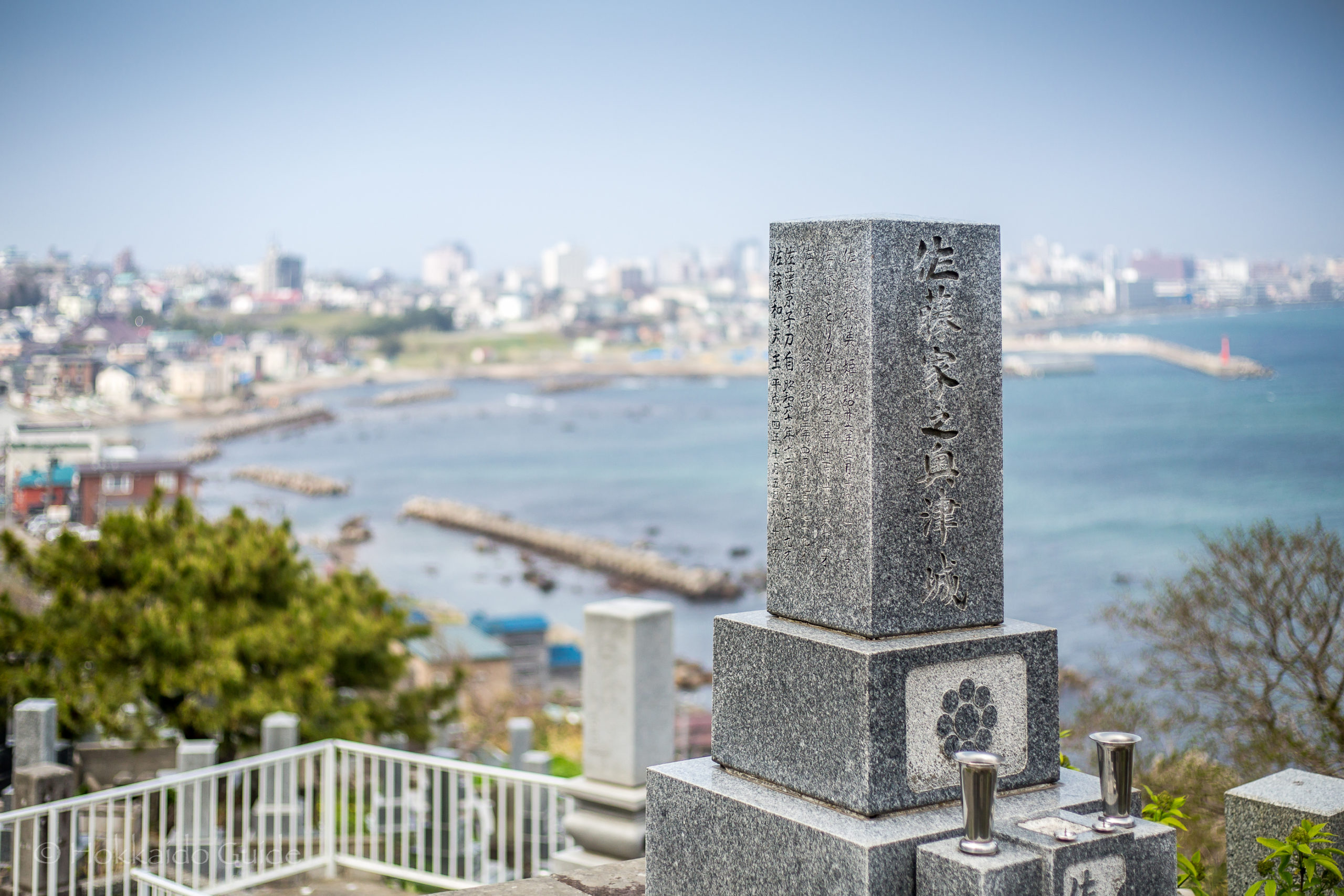
Grave of Ishikawa Takuboku

| Admission | Free |
| Opening Hours | - |
| Contact | 013-821-3453 |
| Notes | Cemetery, historical site, no parking |
| Location / Getting There | Located in the southern part of Hakodate city on the headland near Mt. Hakodate. There is street parking around if you are driving. For public transport, the closest station is Yachigashira tram station (seven stops from Hakodate tram station). From here it is a 9 minute walk south. 16-1 Sumiyoshicho, Hakodate, Hokkaido 040-0045 |
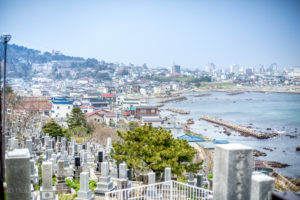 The cemetery of Hakodate Shiei Sumiyoshimachi Kyodo can be found on the headland in Hakodate. It is a very captivating place as it has views overlooking southern Hakodate and being on the edge of the bluff, it has great views overlooking the ocean. The ocean breeze and the peacefulness of this quiet place is home to a couple of sightseeing spots within the cemetery. These include the graves of Ishikawa Takuboku and his family, and monuments to Miyazaki Iku & Sunayama Kage Ji. These spots have plaques about the lives of these famous people.
The cemetery of Hakodate Shiei Sumiyoshimachi Kyodo can be found on the headland in Hakodate. It is a very captivating place as it has views overlooking southern Hakodate and being on the edge of the bluff, it has great views overlooking the ocean. The ocean breeze and the peacefulness of this quiet place is home to a couple of sightseeing spots within the cemetery. These include the graves of Ishikawa Takuboku and his family, and monuments to Miyazaki Iku & Sunayama Kage Ji. These spots have plaques about the lives of these famous people.
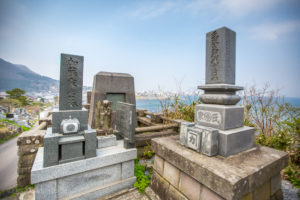 The graves here of note are to do with prominent literary figures of the Meiji era. Ishikawa Takuboku was a prominent poet. Although he only spent a short time Hakodate, he is buried here. During his short stay in Hakodate, he enjoyed the support from a literary group called ‘Bokushukusha’ and was quoted as saying “I’d like to die here.” After succumbing to tuberculosis his brother constructed this grave in 1926. Miyazaki Iku was a poet and member of the Bokushukusha and supporter of Ishikawa Takuboku. The other monument is for Sunayama Kage Ji (real name Nakano Tarao). He was actively engaged in the literary magazine “Gin No Tsubo” which translates to “The Silver Pot”.
The graves here of note are to do with prominent literary figures of the Meiji era. Ishikawa Takuboku was a prominent poet. Although he only spent a short time Hakodate, he is buried here. During his short stay in Hakodate, he enjoyed the support from a literary group called ‘Bokushukusha’ and was quoted as saying “I’d like to die here.” After succumbing to tuberculosis his brother constructed this grave in 1926. Miyazaki Iku was a poet and member of the Bokushukusha and supporter of Ishikawa Takuboku. The other monument is for Sunayama Kage Ji (real name Nakano Tarao). He was actively engaged in the literary magazine “Gin No Tsubo” which translates to “The Silver Pot”.

Ōmori Park

| Admission | Free |
| Opening Hours | Open 24 hours |
| Closed | - |
| Contact | 0138-40-3601 |
| Notes | Cemetery, sports park, playground, no parking, bathrooms |
| Location / Getting There | Located in Hakodate, by Omori beach. The closest tram station is Matsukaze-cho Station. It is a 7 minute walk east from this station. The park is also next to Kameda River. 33 Omoricho, Hakodate, Hokkaido 040-0034 |
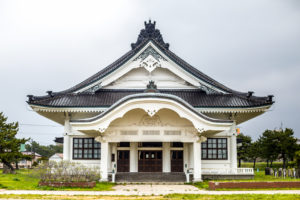 Ōmori Park is a large green space in Hakodate. It is used for sporting events (namely baseball), and as a play area for children. At the northern end of the park, you can find an impressive memorial hall and burial site. The park is popular for those looking to keep fit, as it has outdoor exercise equipment, plus it being a good spot to jog around. The spacious playground area also makes it a popular spot for families. The park is just across the road from Ōmori Beach as well, so there are a few things to see in the area.
Ōmori Park is a large green space in Hakodate. It is used for sporting events (namely baseball), and as a play area for children. At the northern end of the park, you can find an impressive memorial hall and burial site. The park is popular for those looking to keep fit, as it has outdoor exercise equipment, plus it being a good spot to jog around. The spacious playground area also makes it a popular spot for families. The park is just across the road from Ōmori Beach as well, so there are a few things to see in the area.
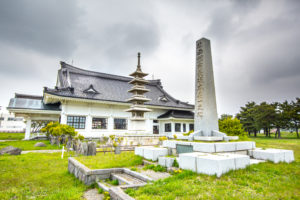 The memorial hall was constructed in 1937 with the five tier pagoda being built later. Takenosuke Miyamoto (a local businessman), was behind the construction of the pagoda using his own funds and property. The area has some historical significance and there is a large plaque (in Japanese), talking about the dark event that took place here many years ago. On the evening of March 21, 1954 a fire spread through the city and was fanned by strong winds from the ocean. The fire affected 102,000 with almost 3,000 reported missing. The Omori Bridge was terribly burned and many people were killed in and along the Kameda River. This river flows right by the memorial hall and pagoda.
The memorial hall was constructed in 1937 with the five tier pagoda being built later. Takenosuke Miyamoto (a local businessman), was behind the construction of the pagoda using his own funds and property. The area has some historical significance and there is a large plaque (in Japanese), talking about the dark event that took place here many years ago. On the evening of March 21, 1954 a fire spread through the city and was fanned by strong winds from the ocean. The fire affected 102,000 with almost 3,000 reported missing. The Omori Bridge was terribly burned and many people were killed in and along the Kameda River. This river flows right by the memorial hall and pagoda.
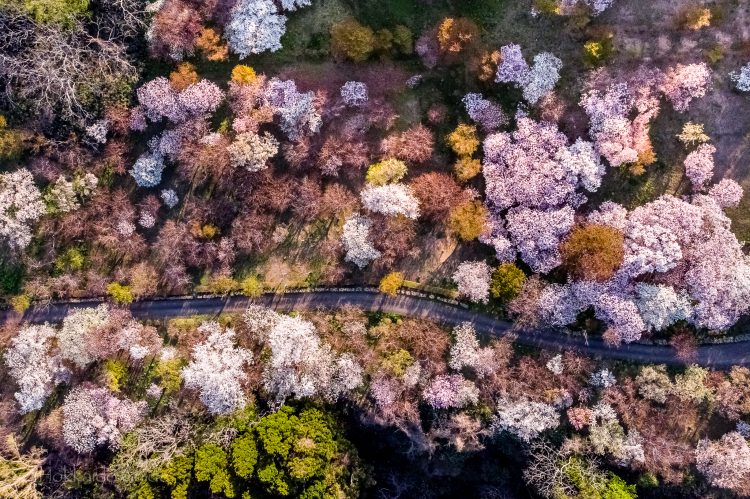
Matsumae Park
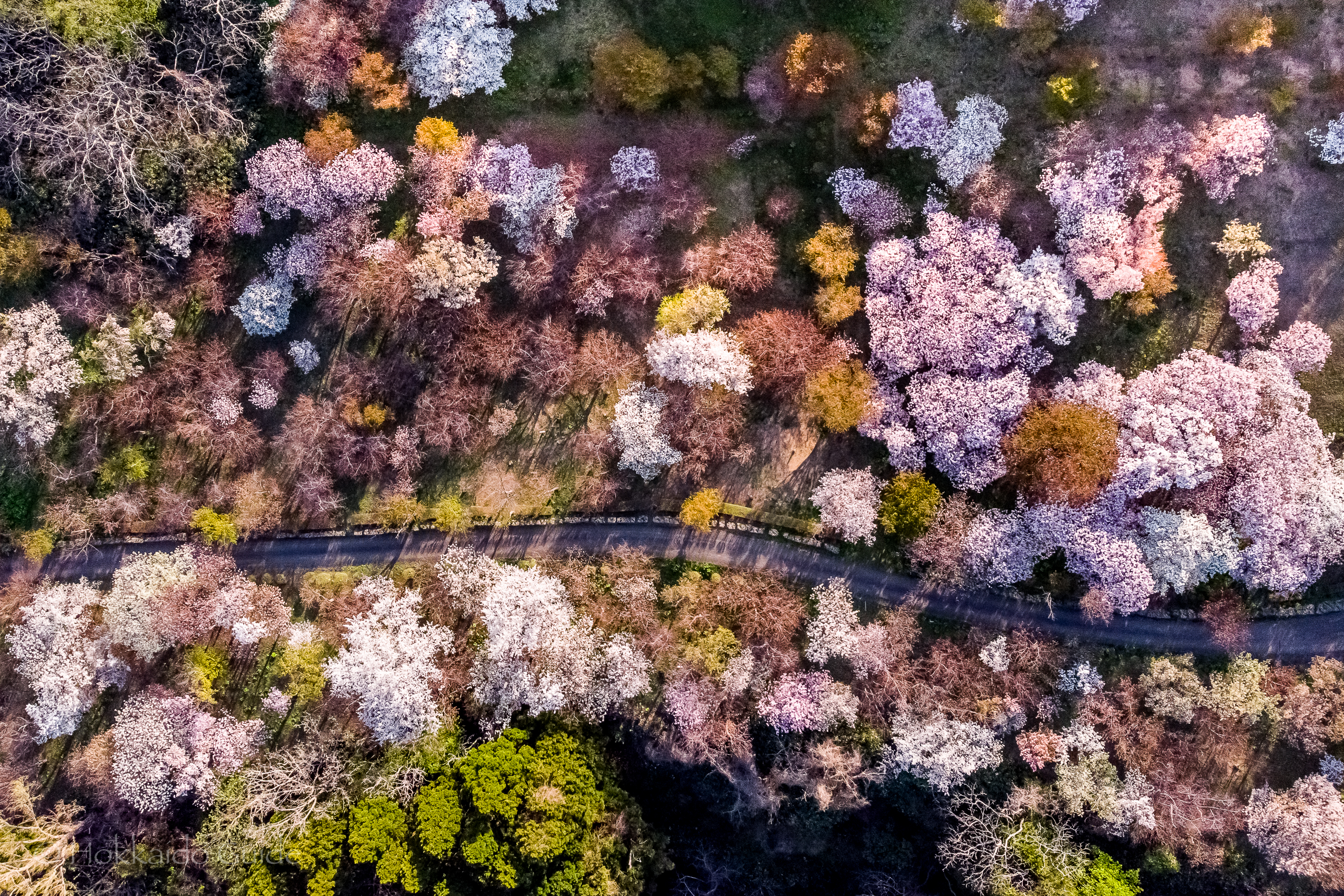
| Admission | Free admission |
| Opening Hours | All day |
| Closed | - |
| Contact | 0139-42-2275 |
| Notes | Parking available 175 cars, Toilets, Wheelchair access & toilets. Matsumae Sakura Festival (late April-mid May) Matsumae Ajisa Festival (early August) |
| Location / Getting There | 6 hour drive from Sapporo or 2 hour bus ride from Hakadote, get off at "Matsujo Bus Stop", 7 minutes on foot. Matsujo, Matsumae-cho, Matsumae-gun, Hokkaido, Japan 049-1511 |
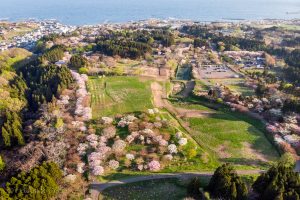
The extensive Matsumae Park
[the_ad id=”4264″]
The path running through the park


